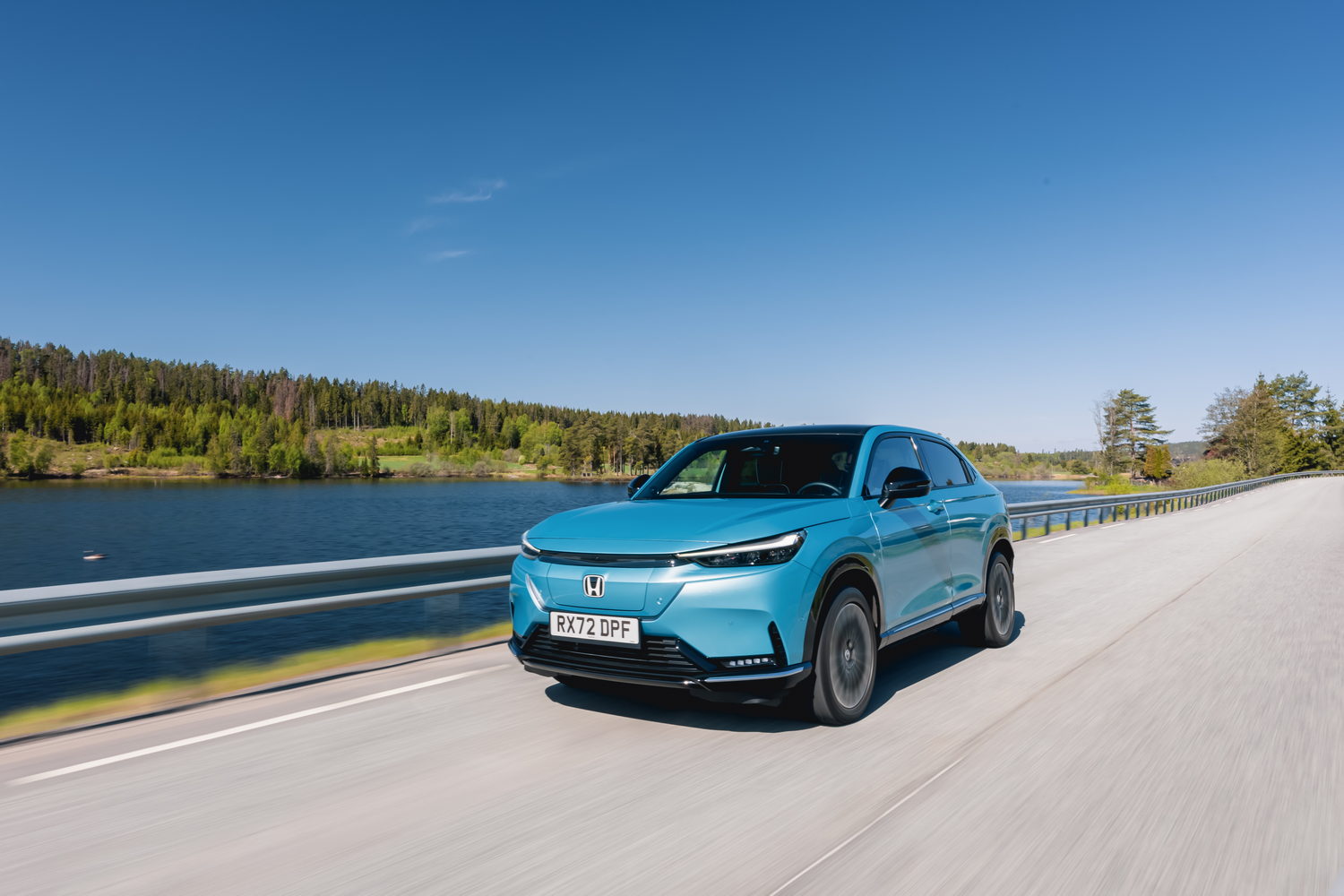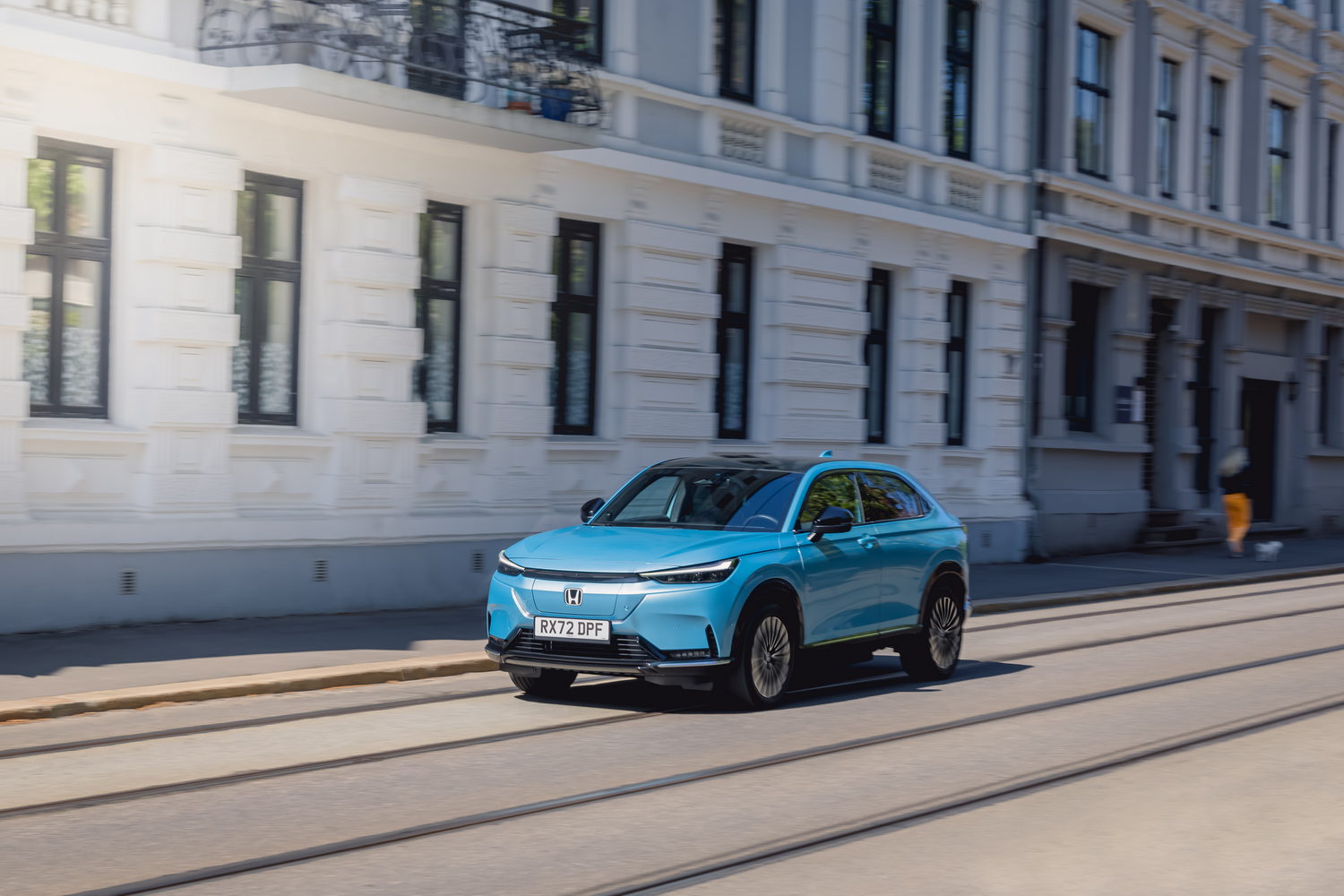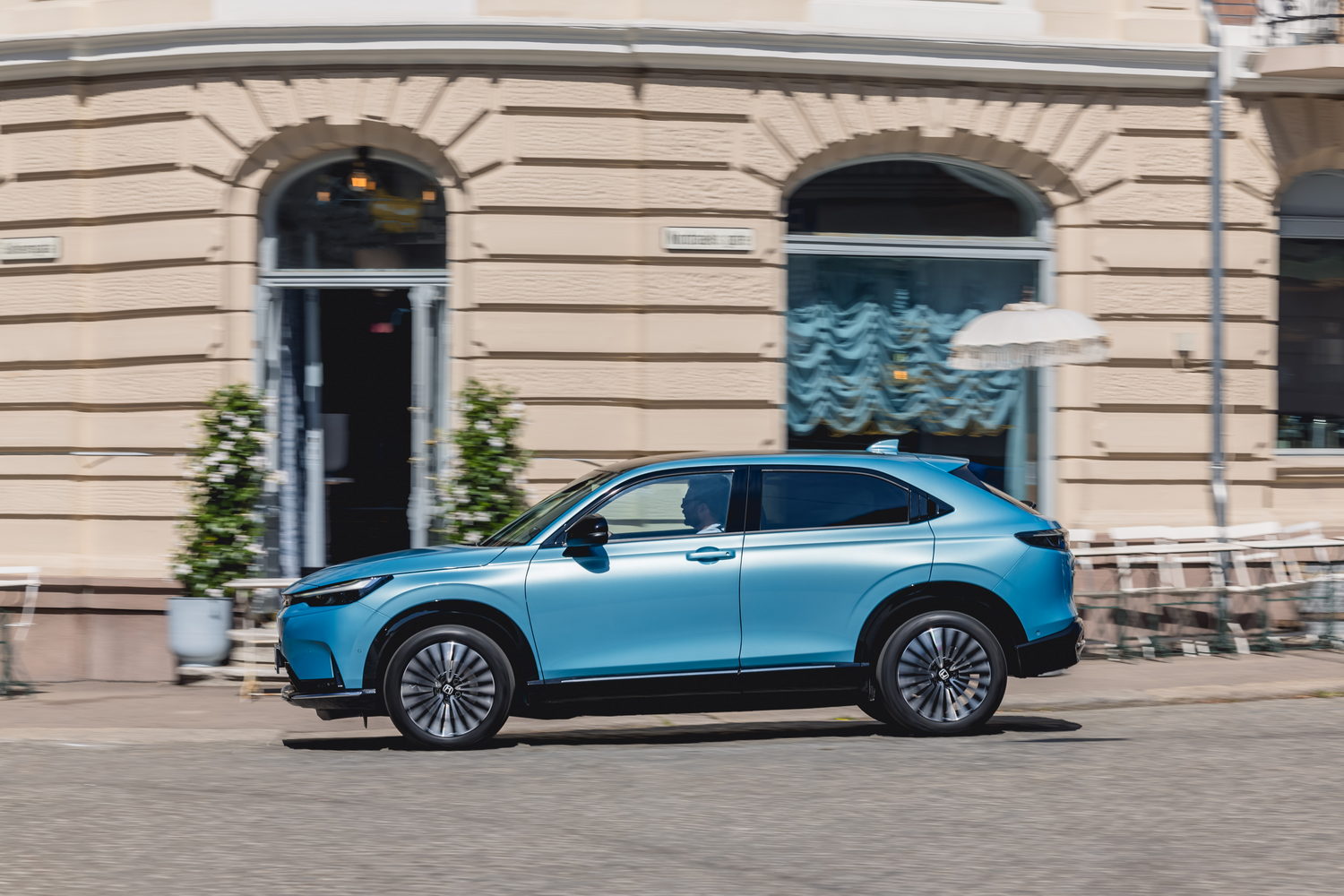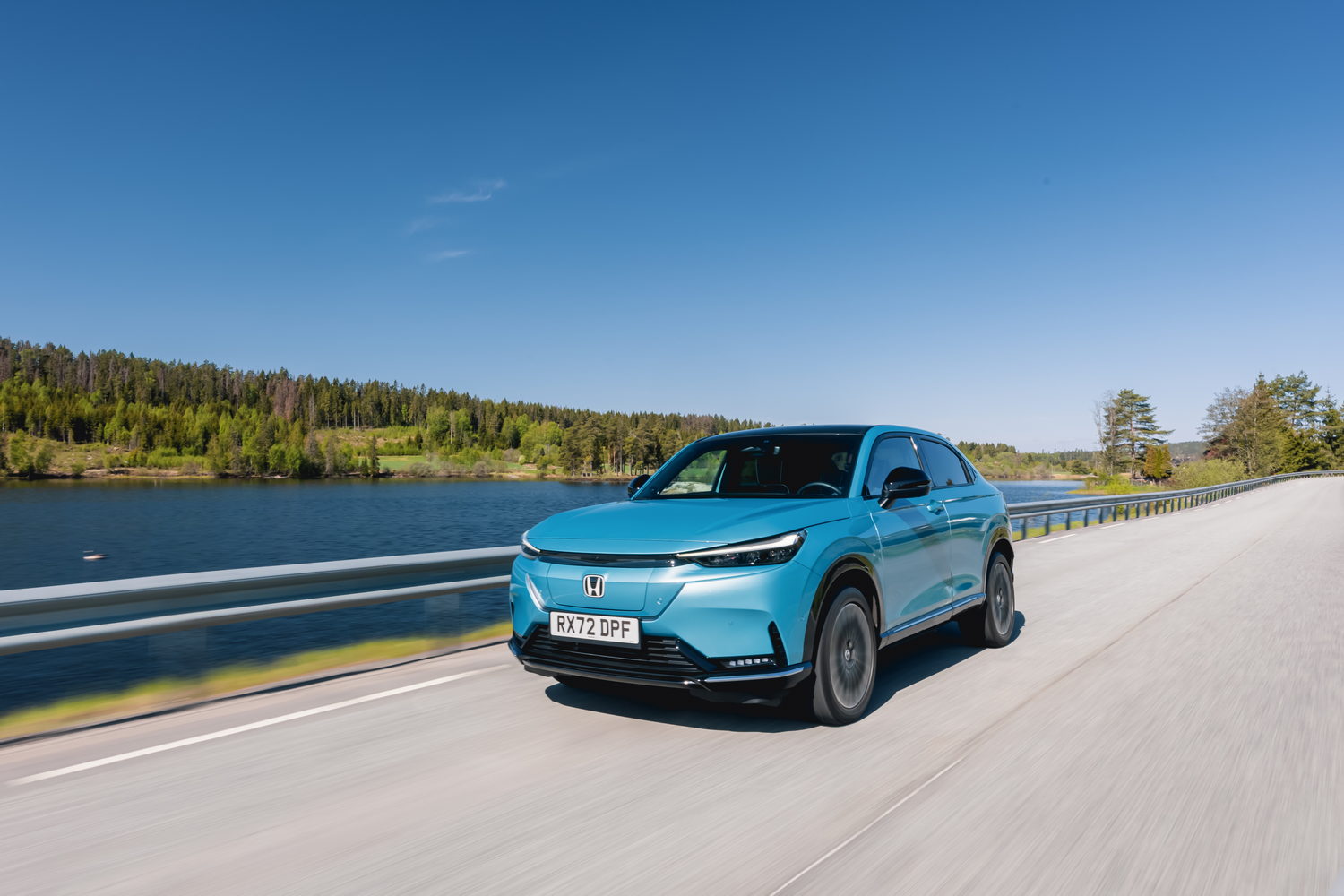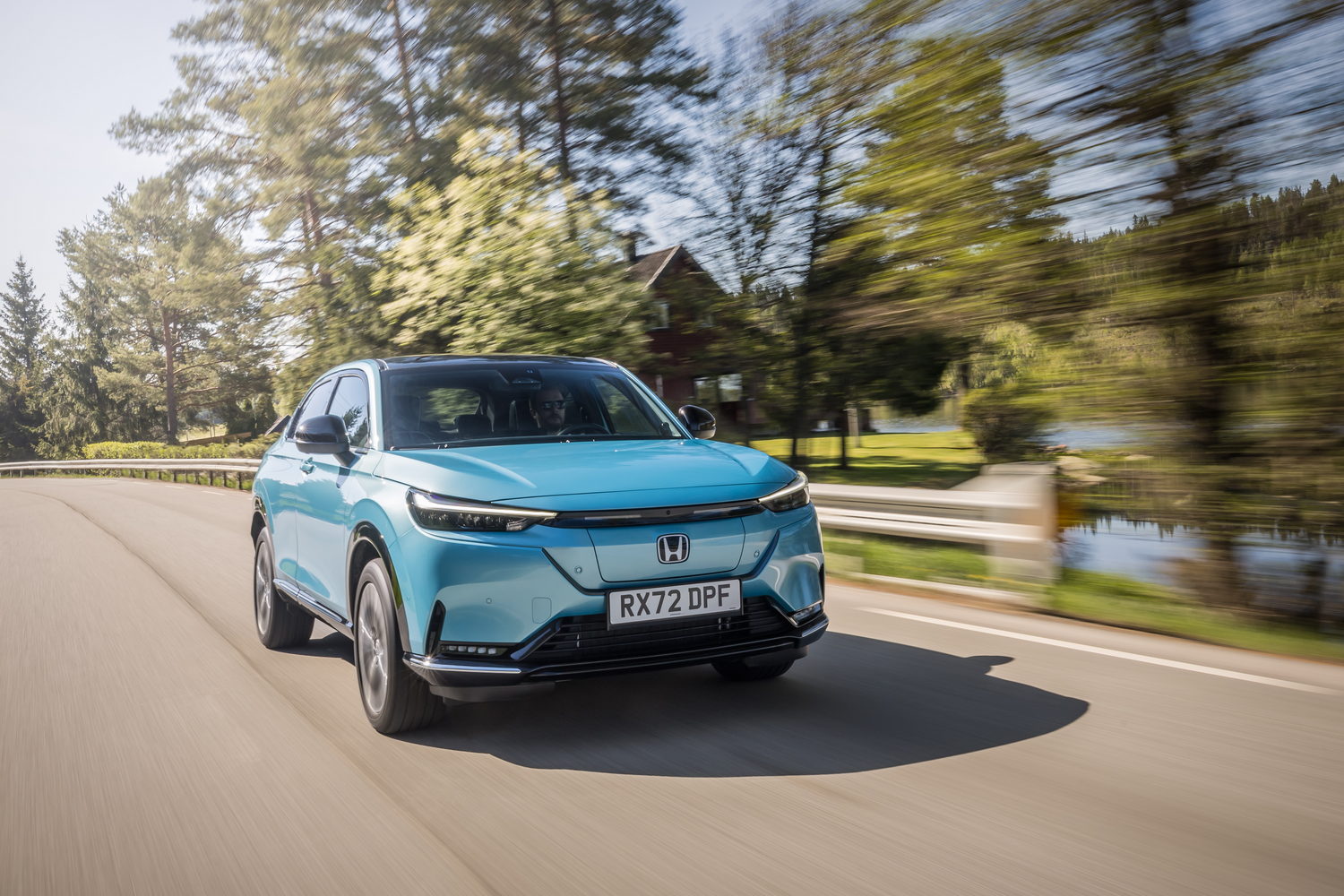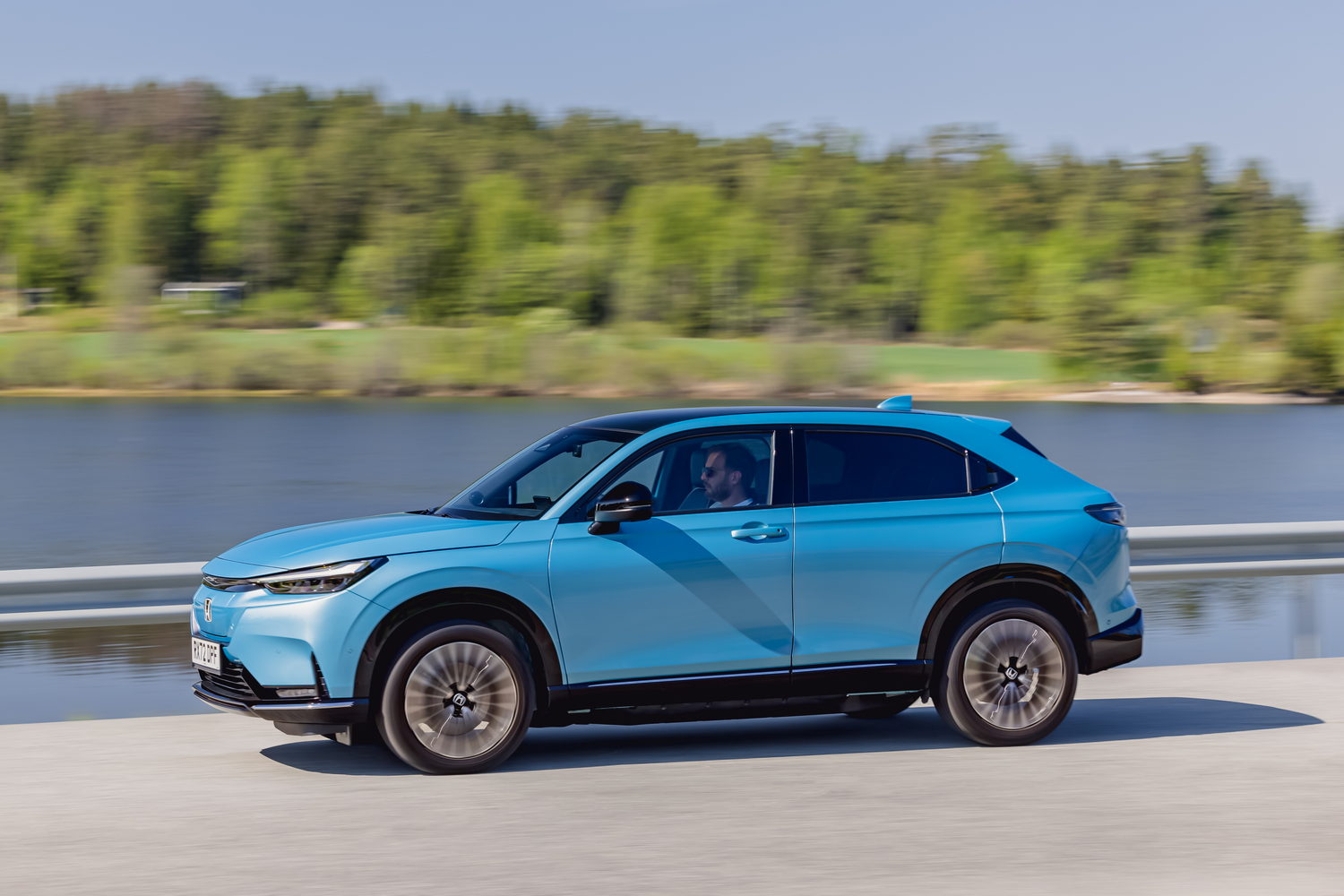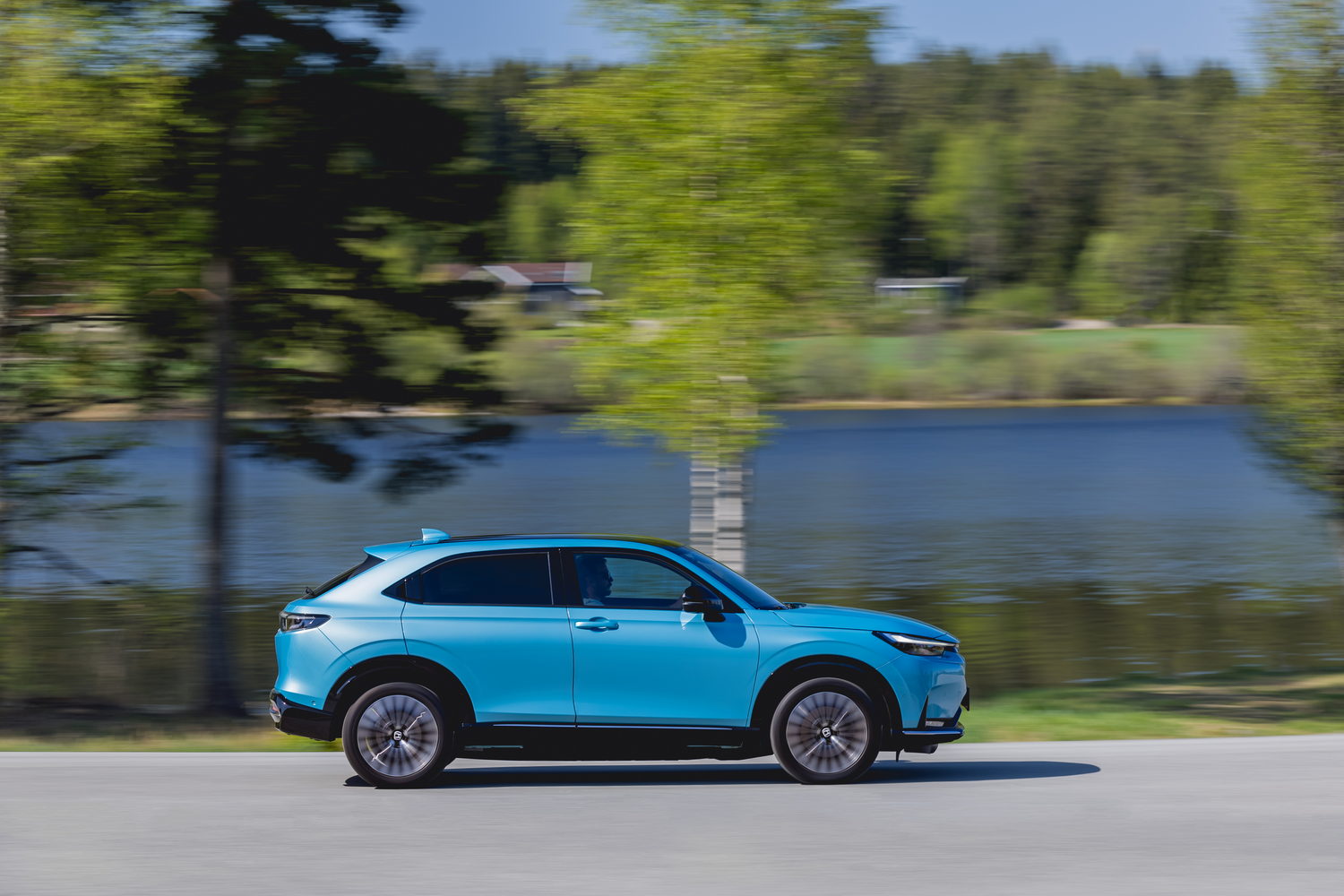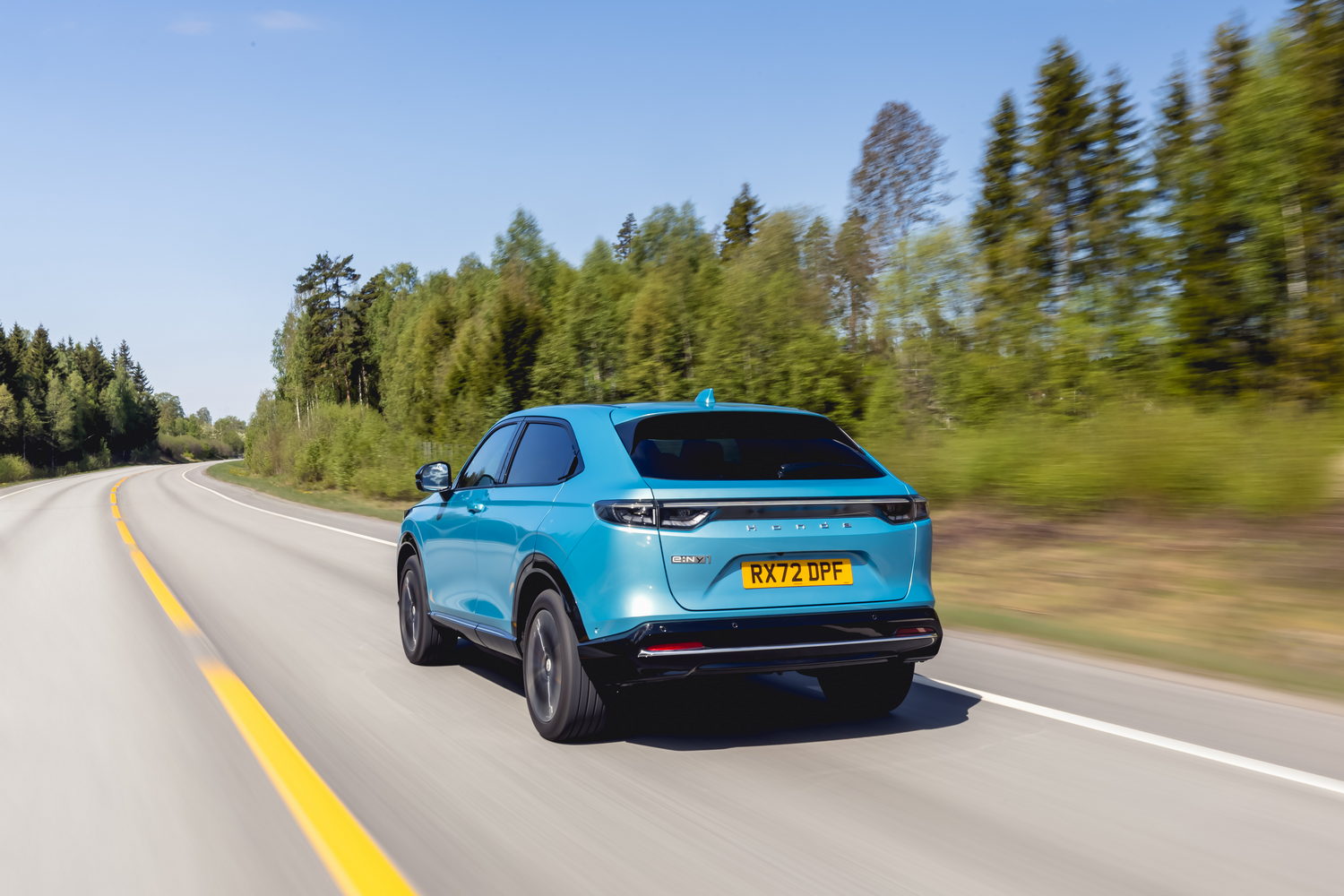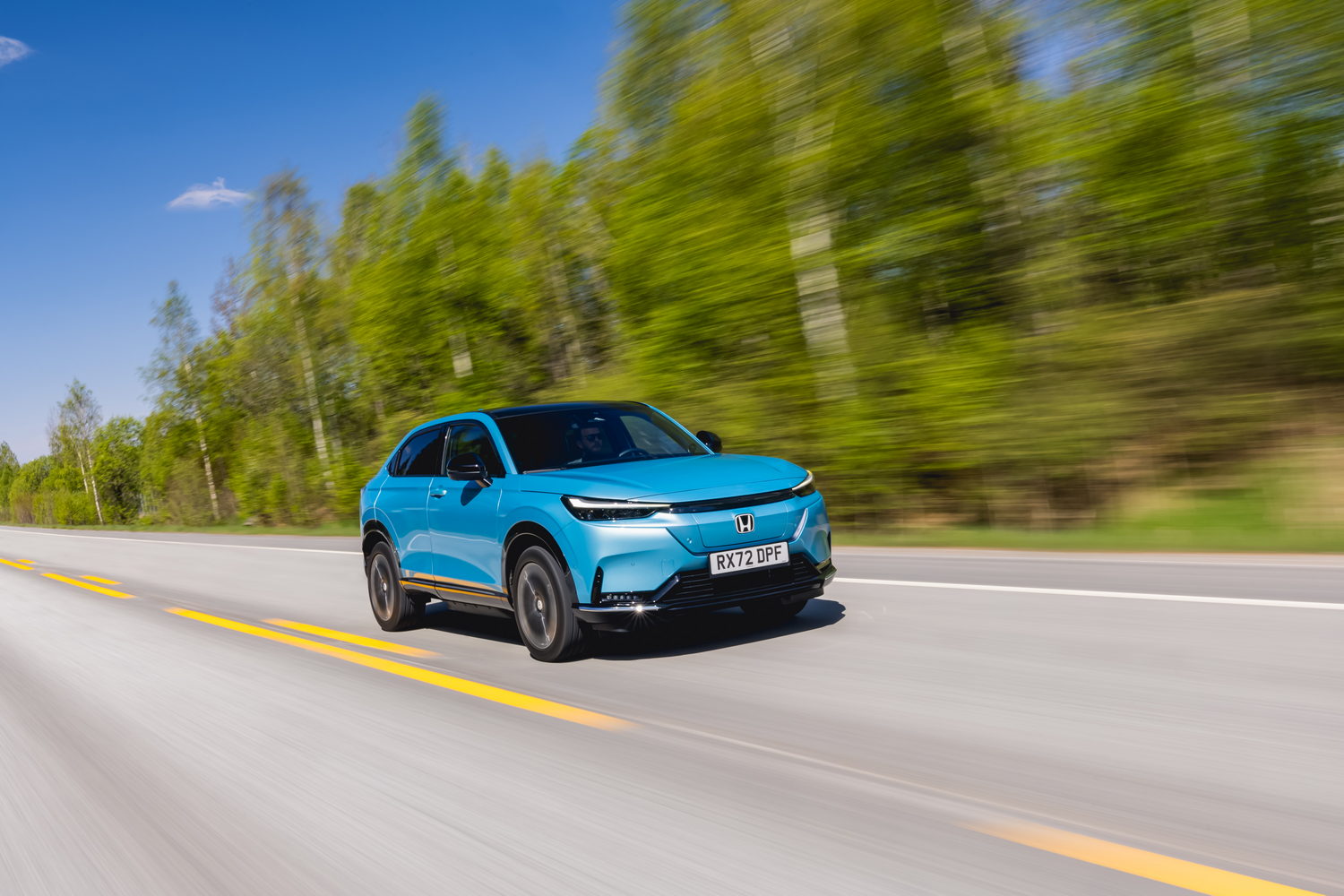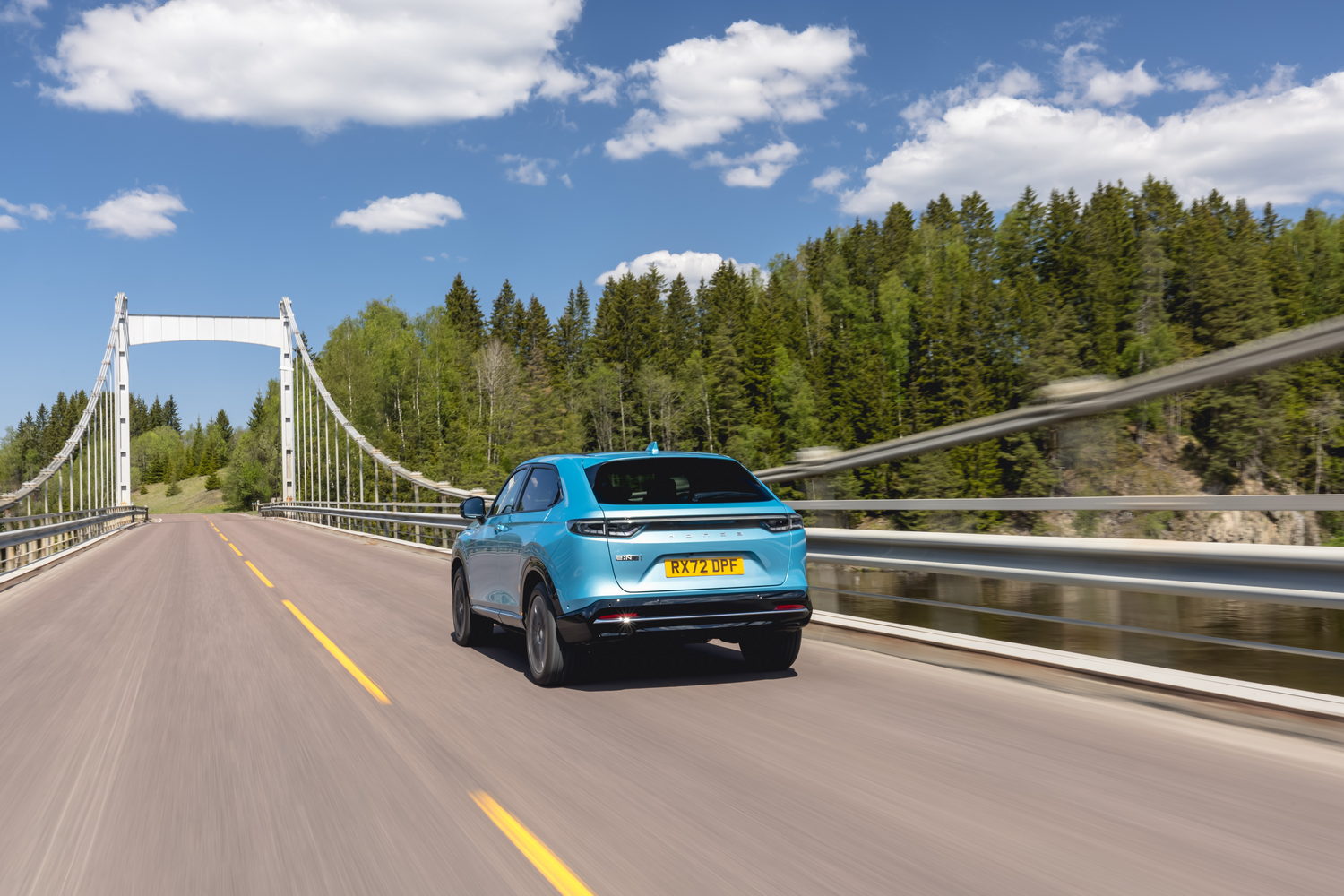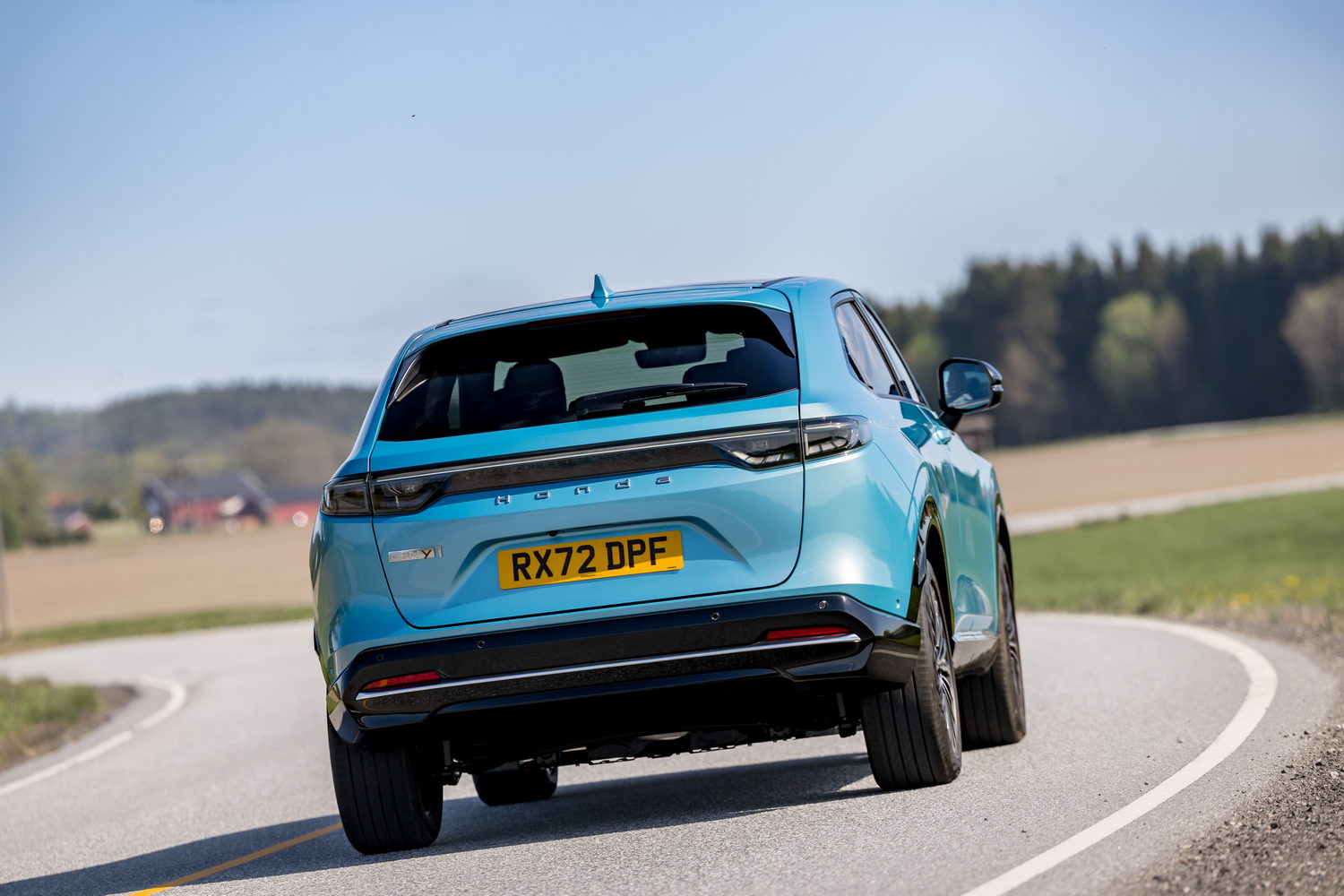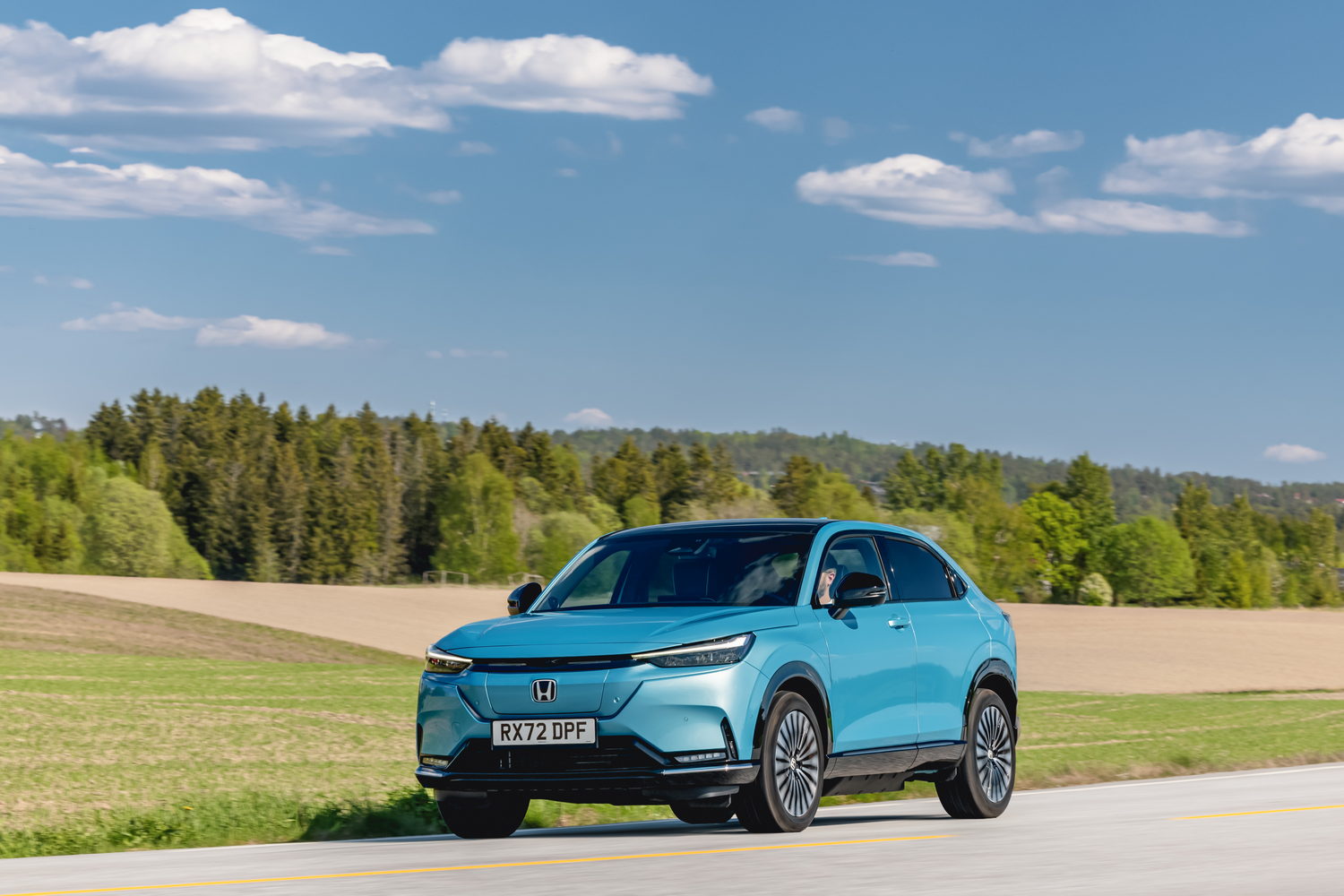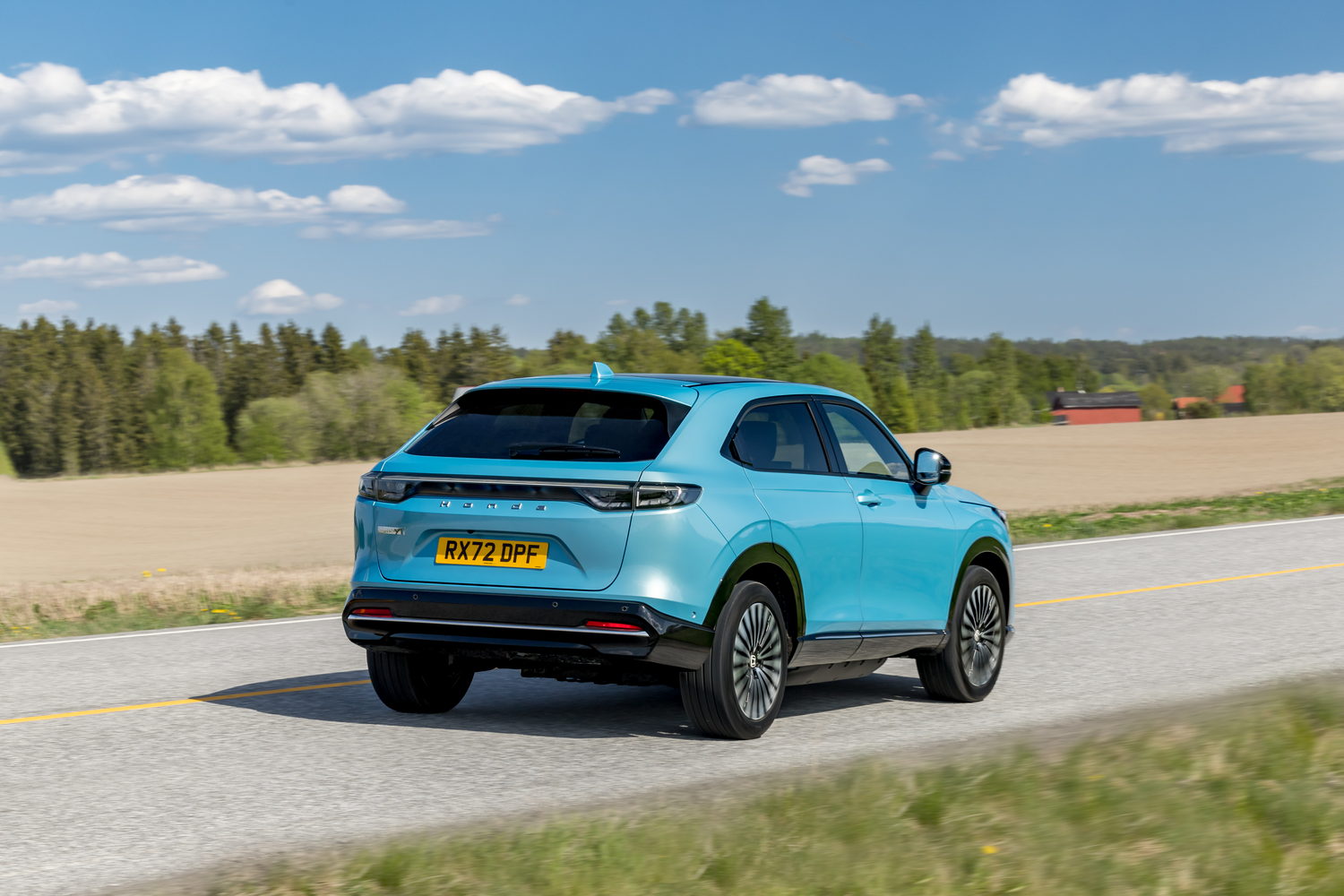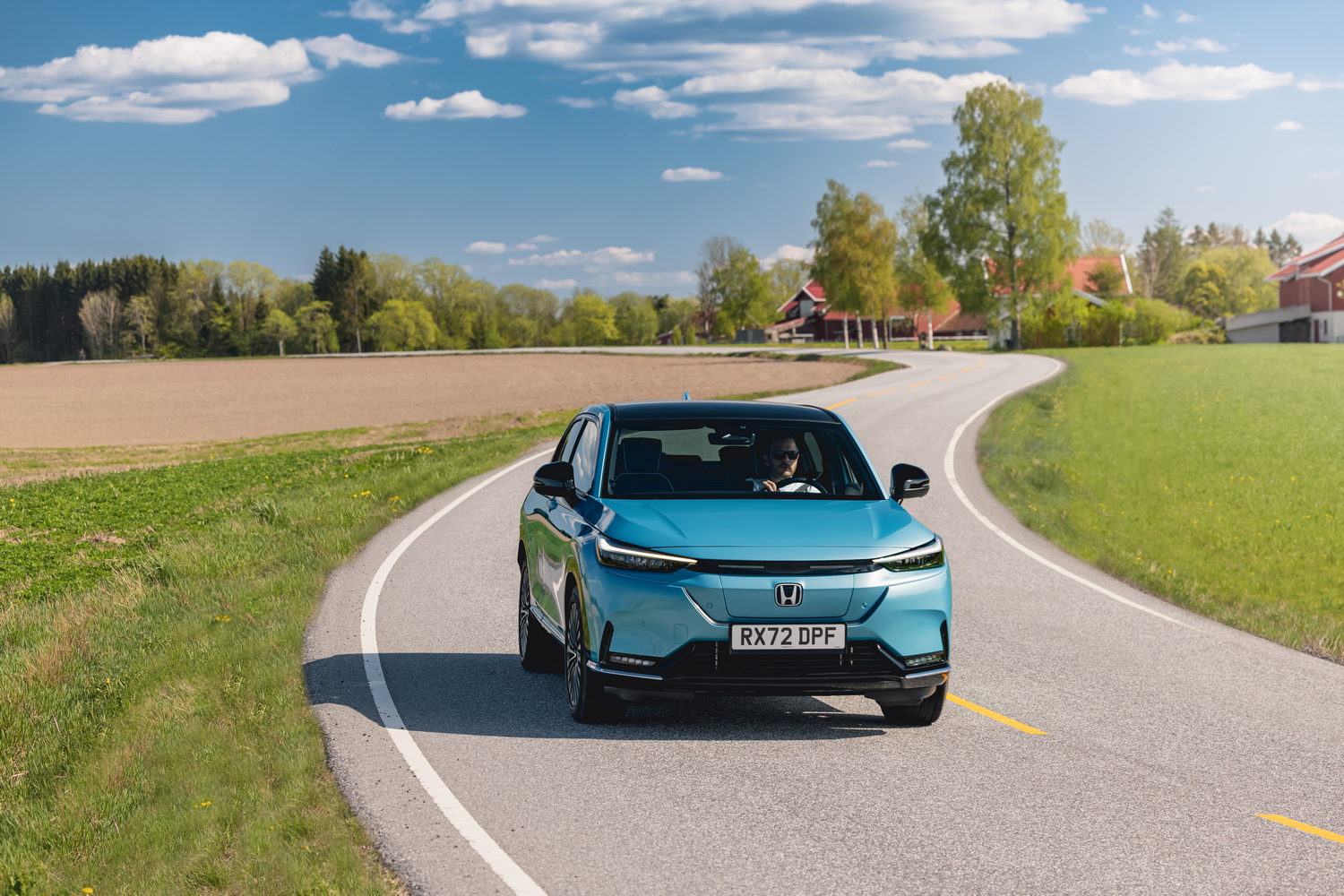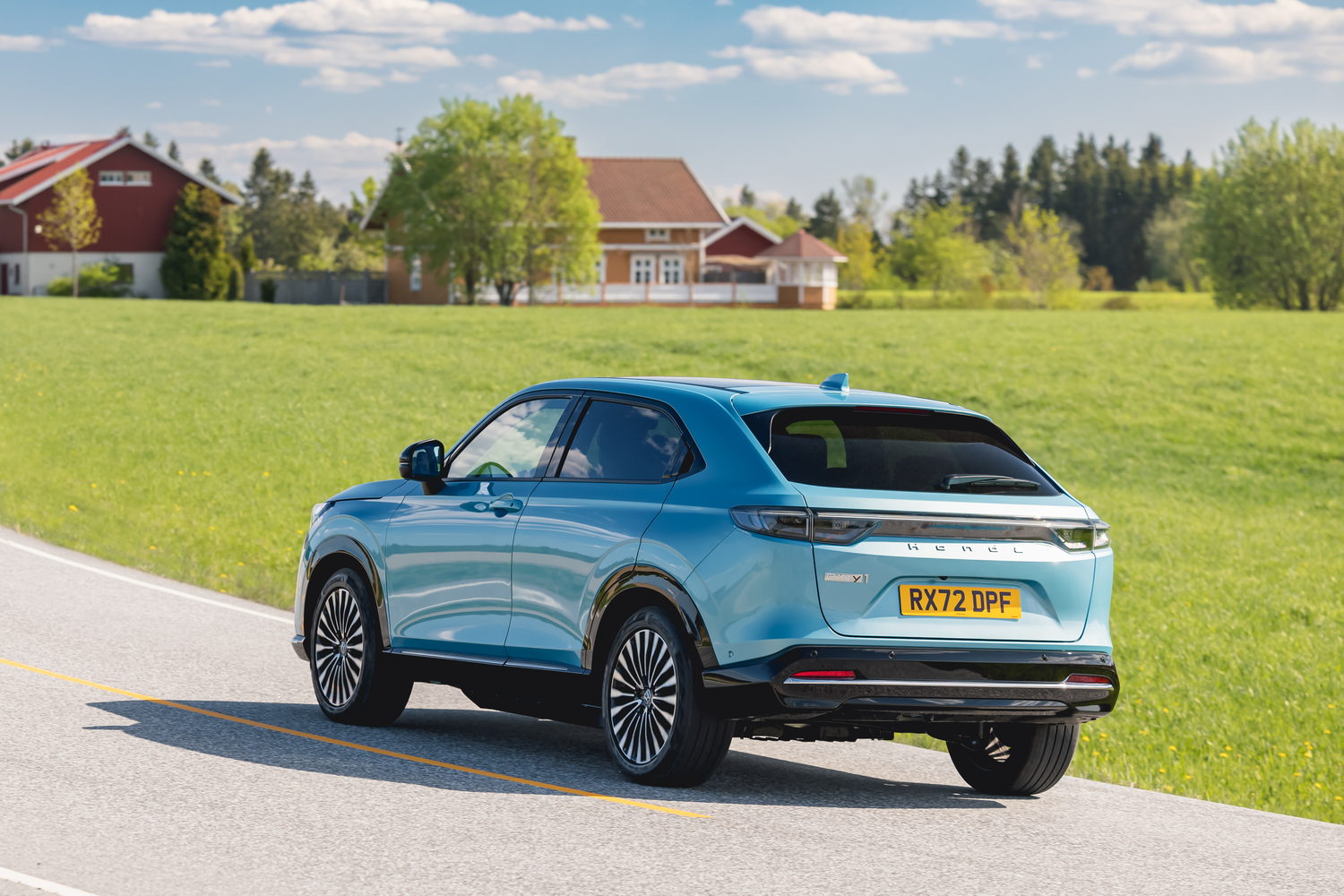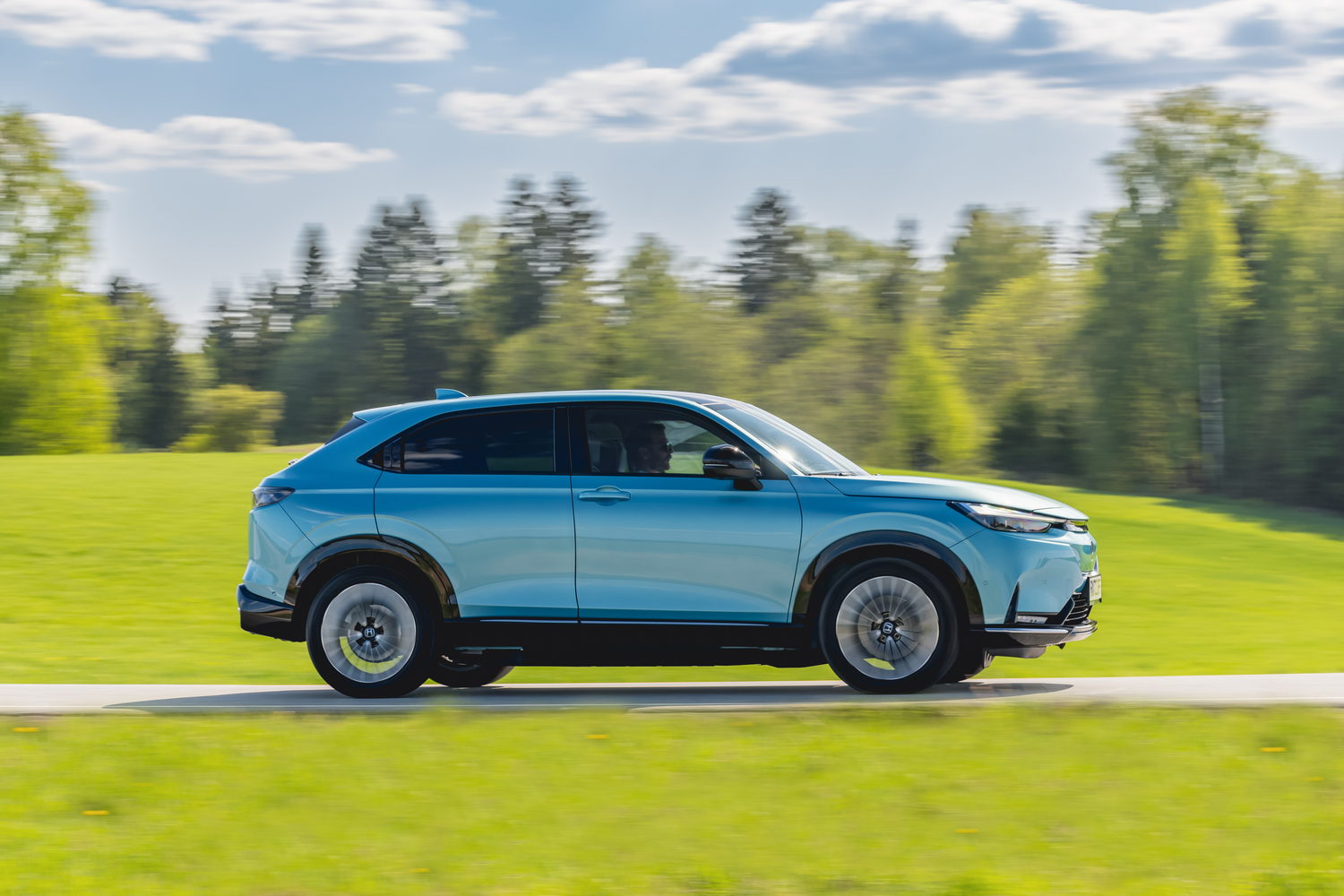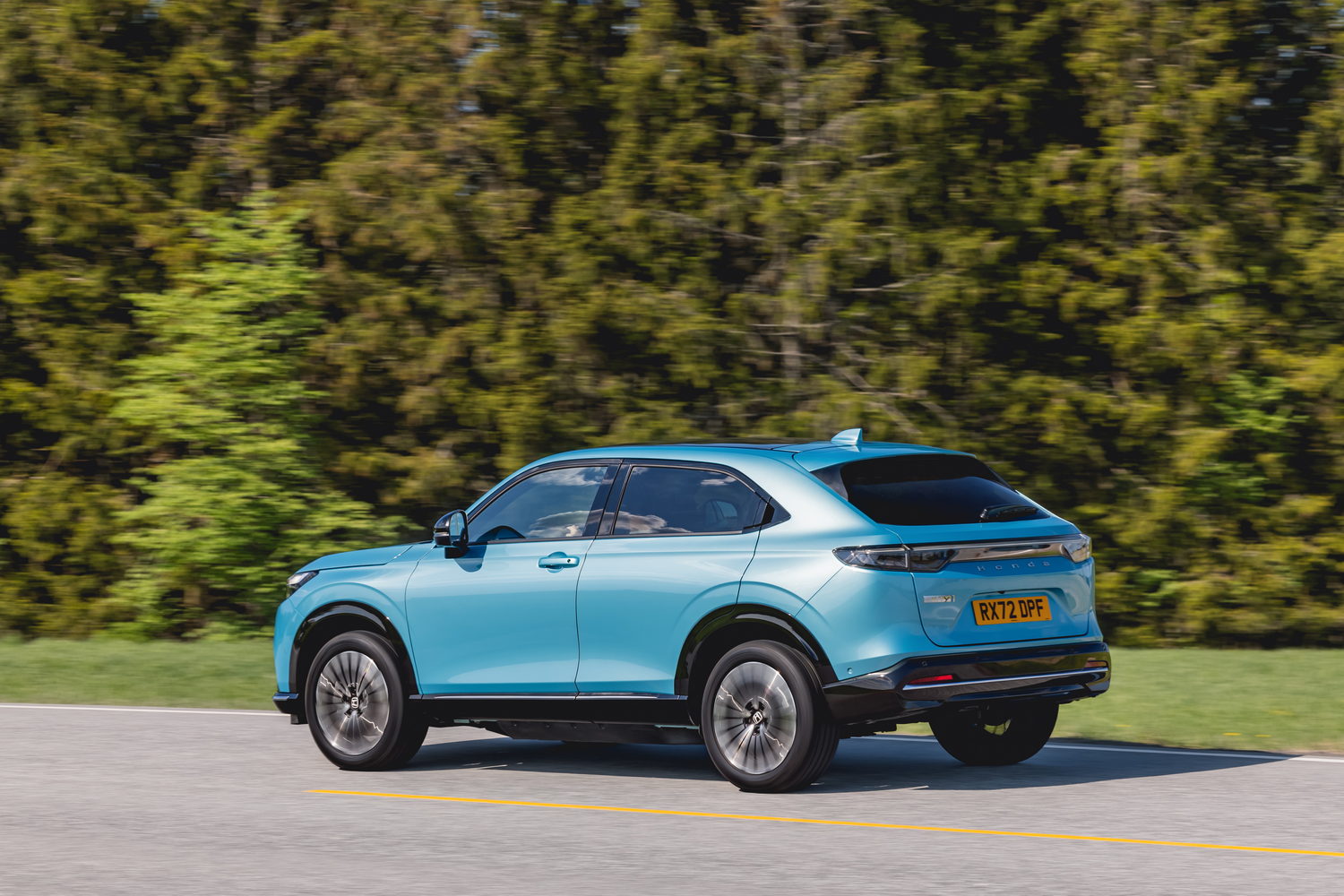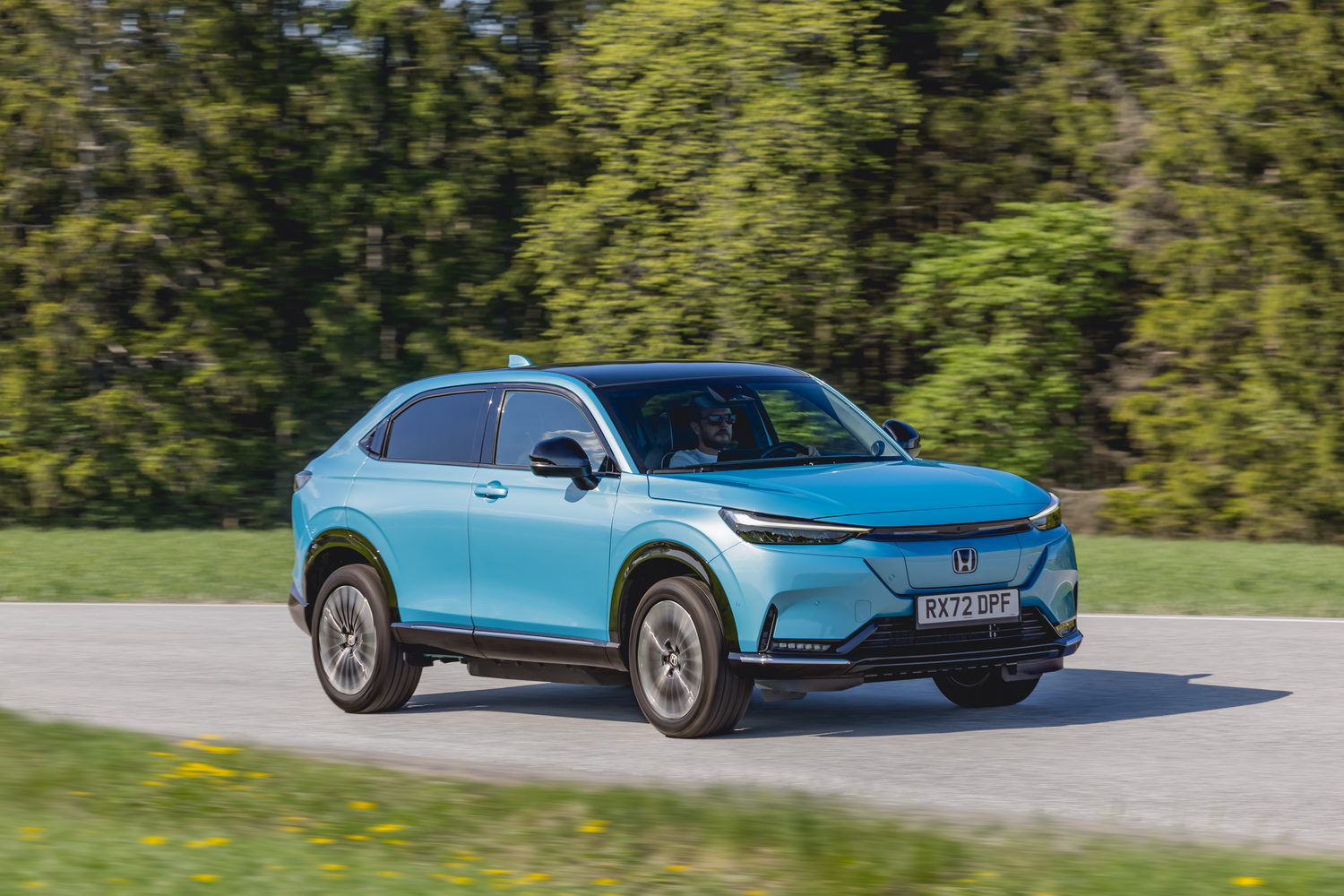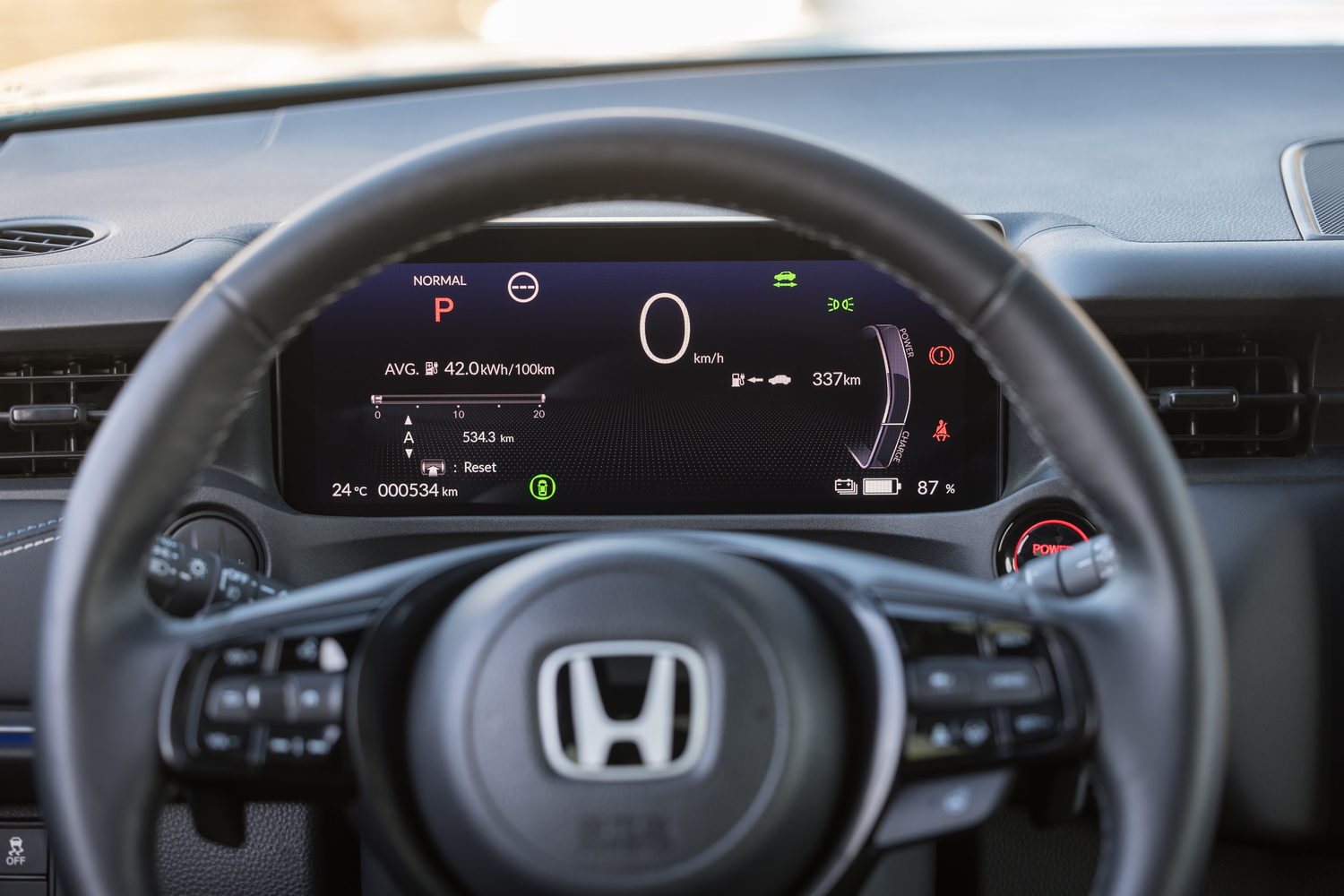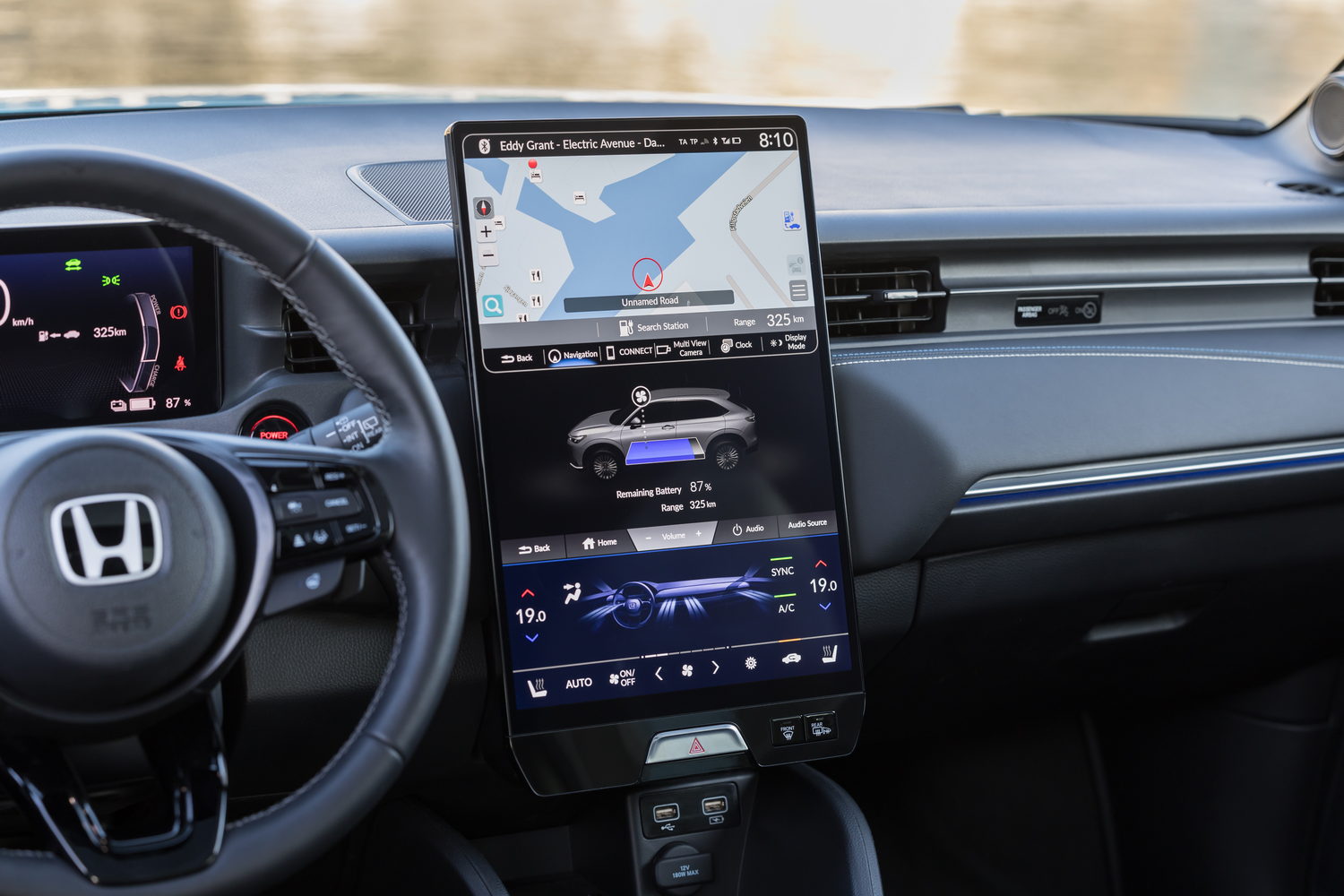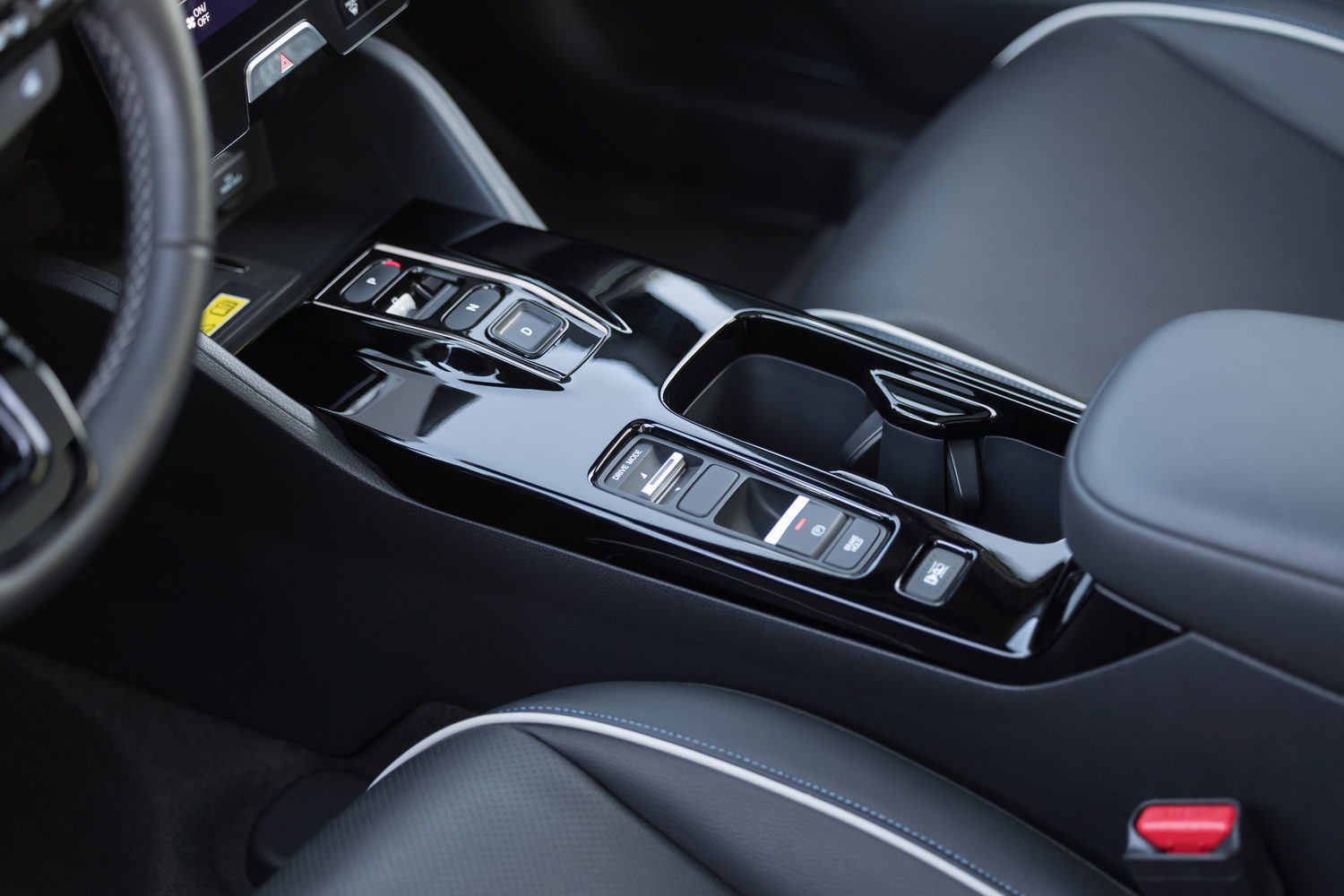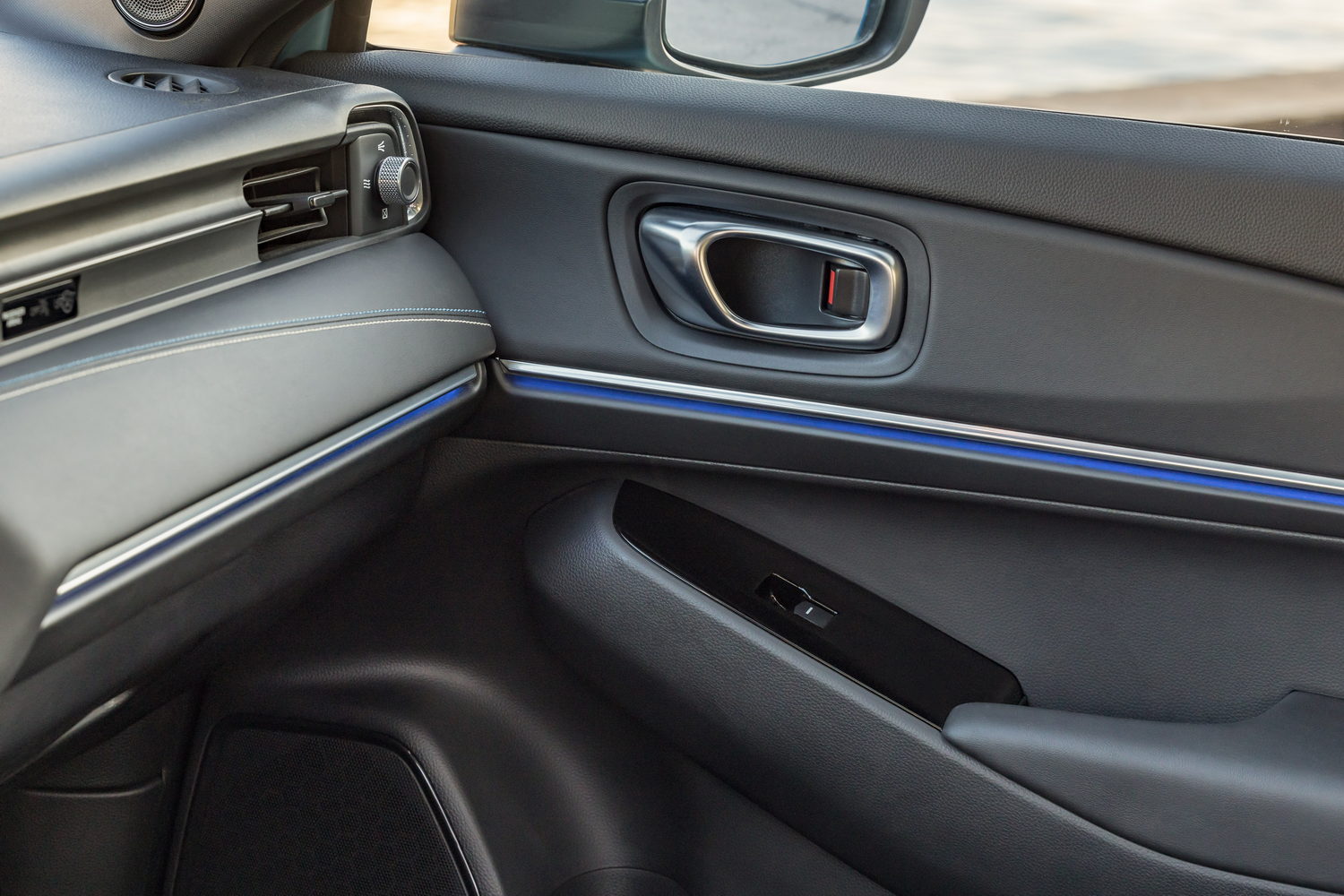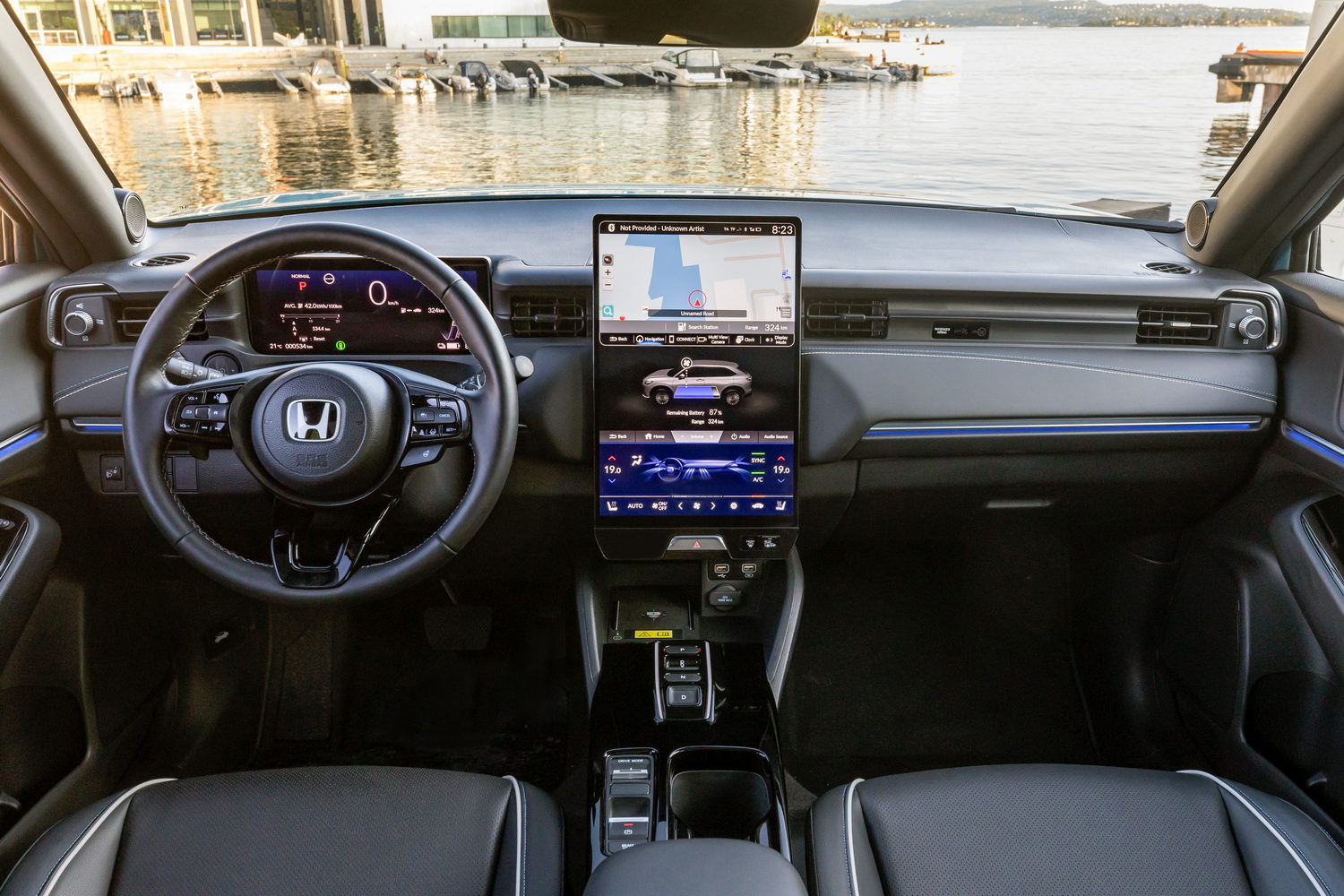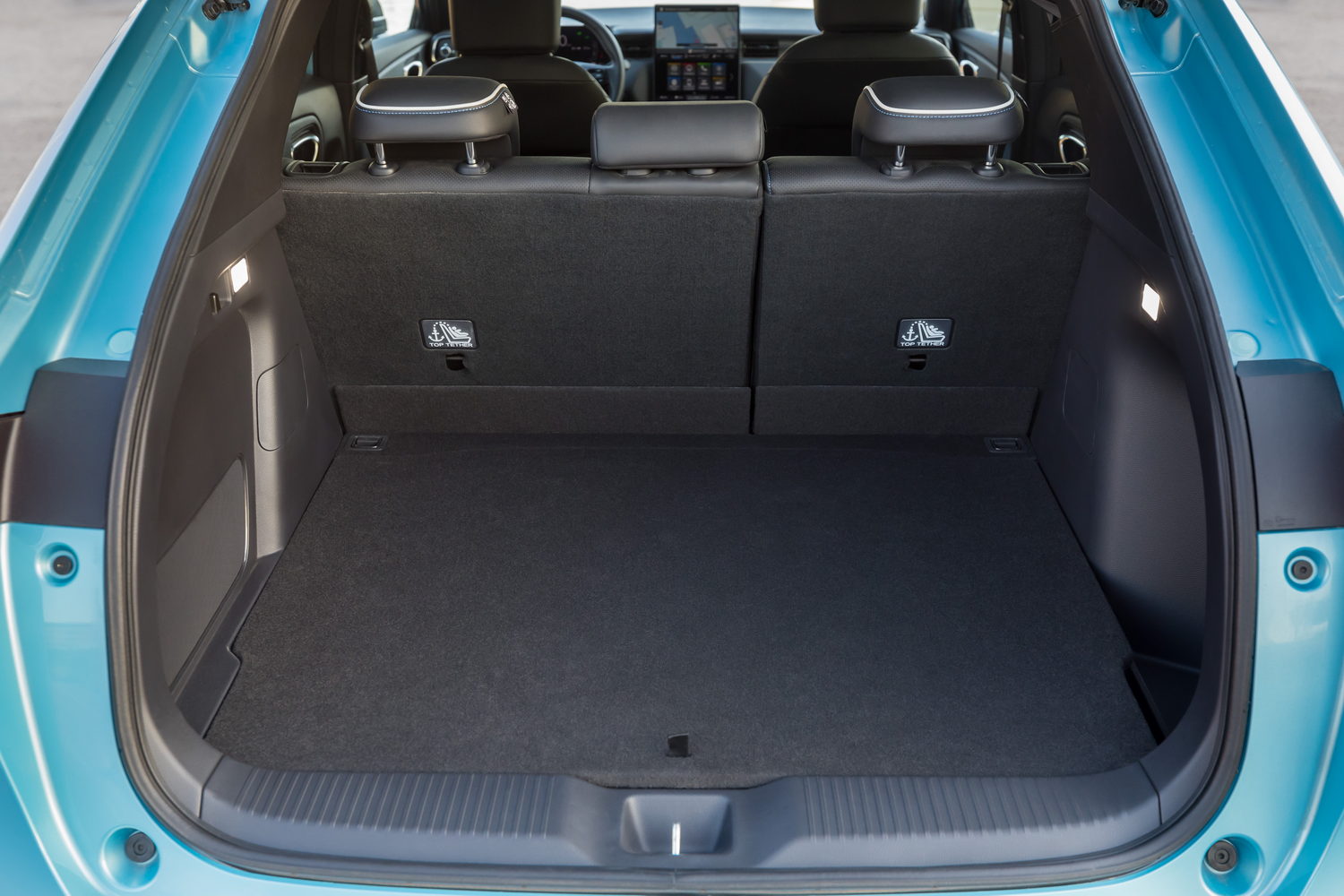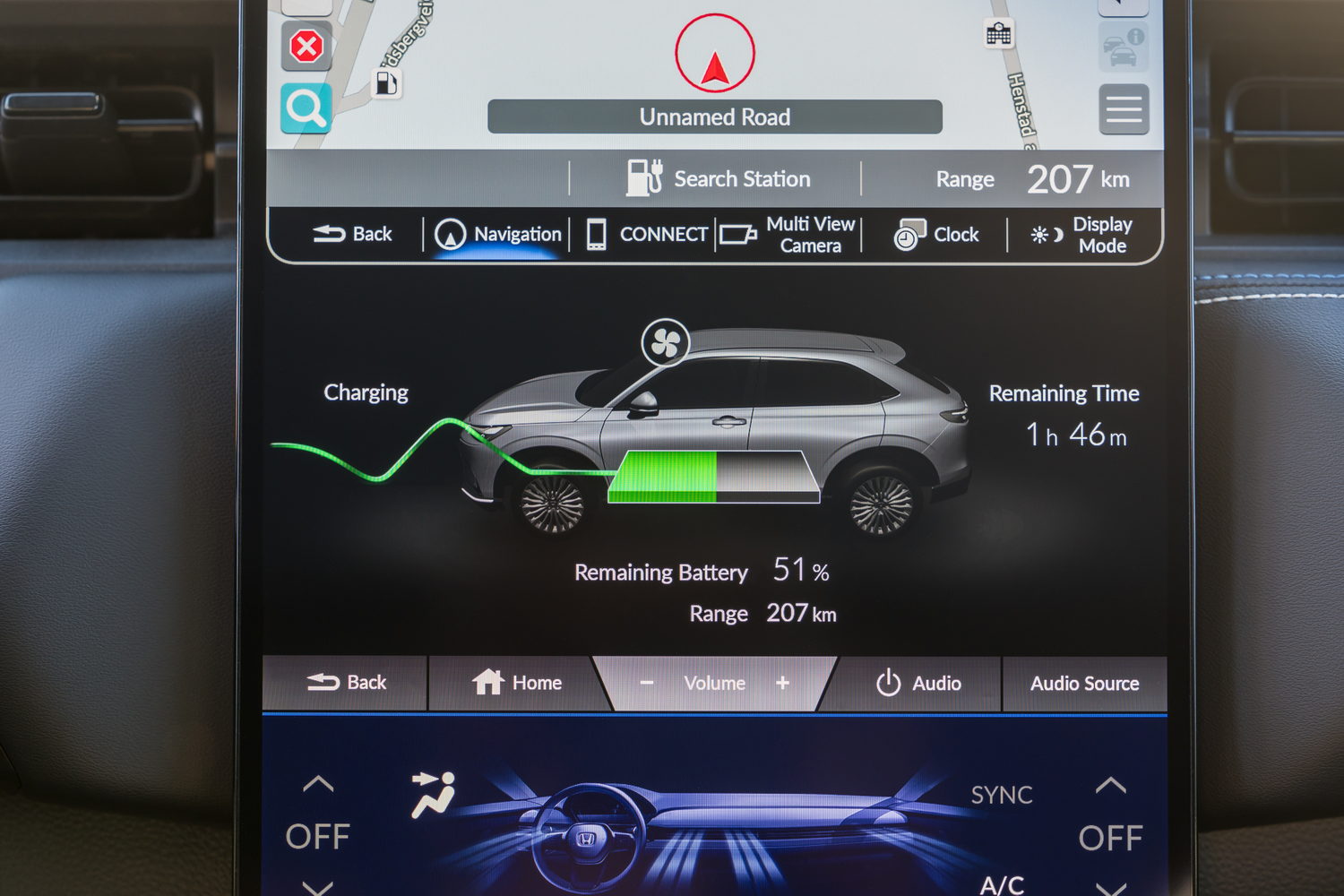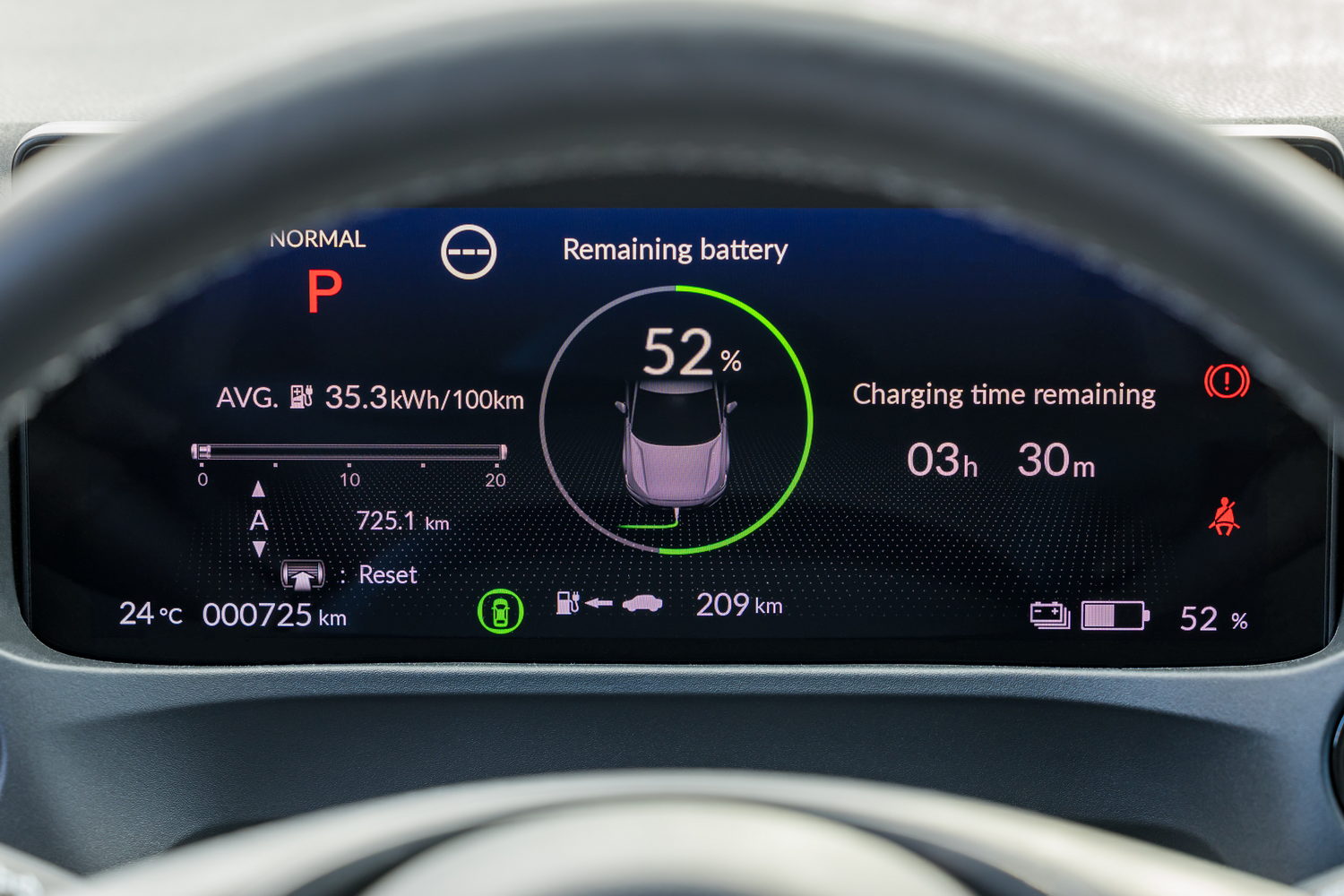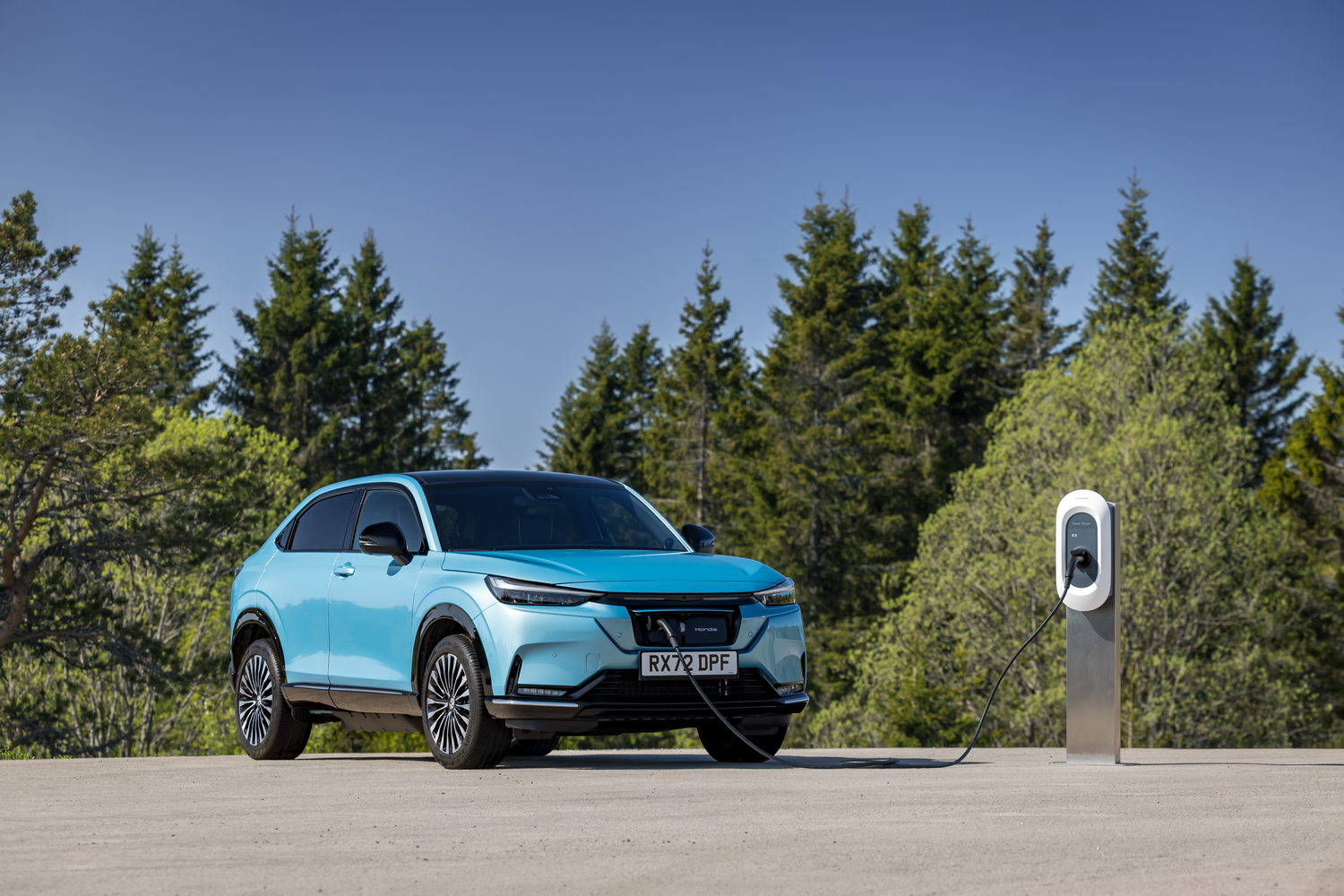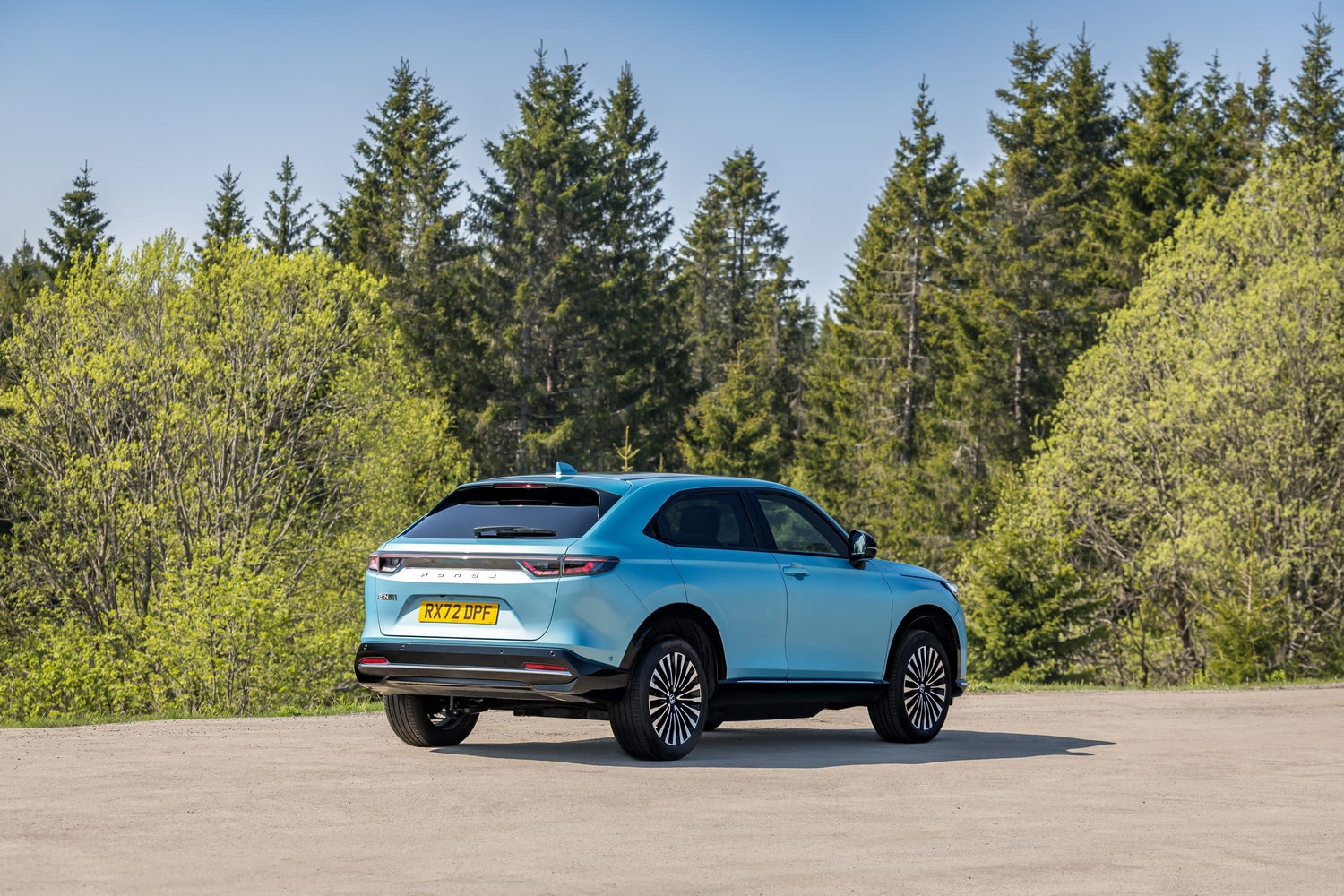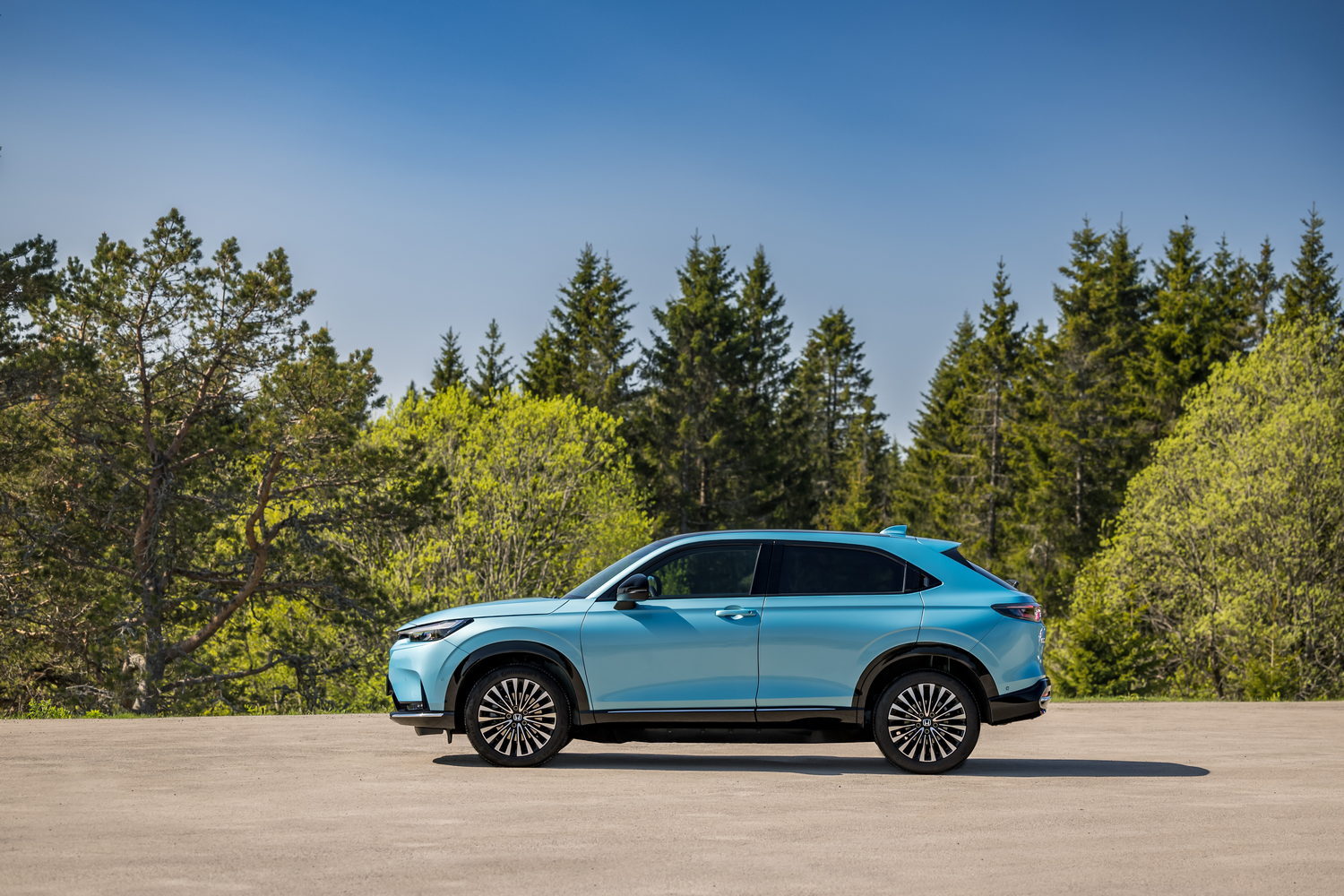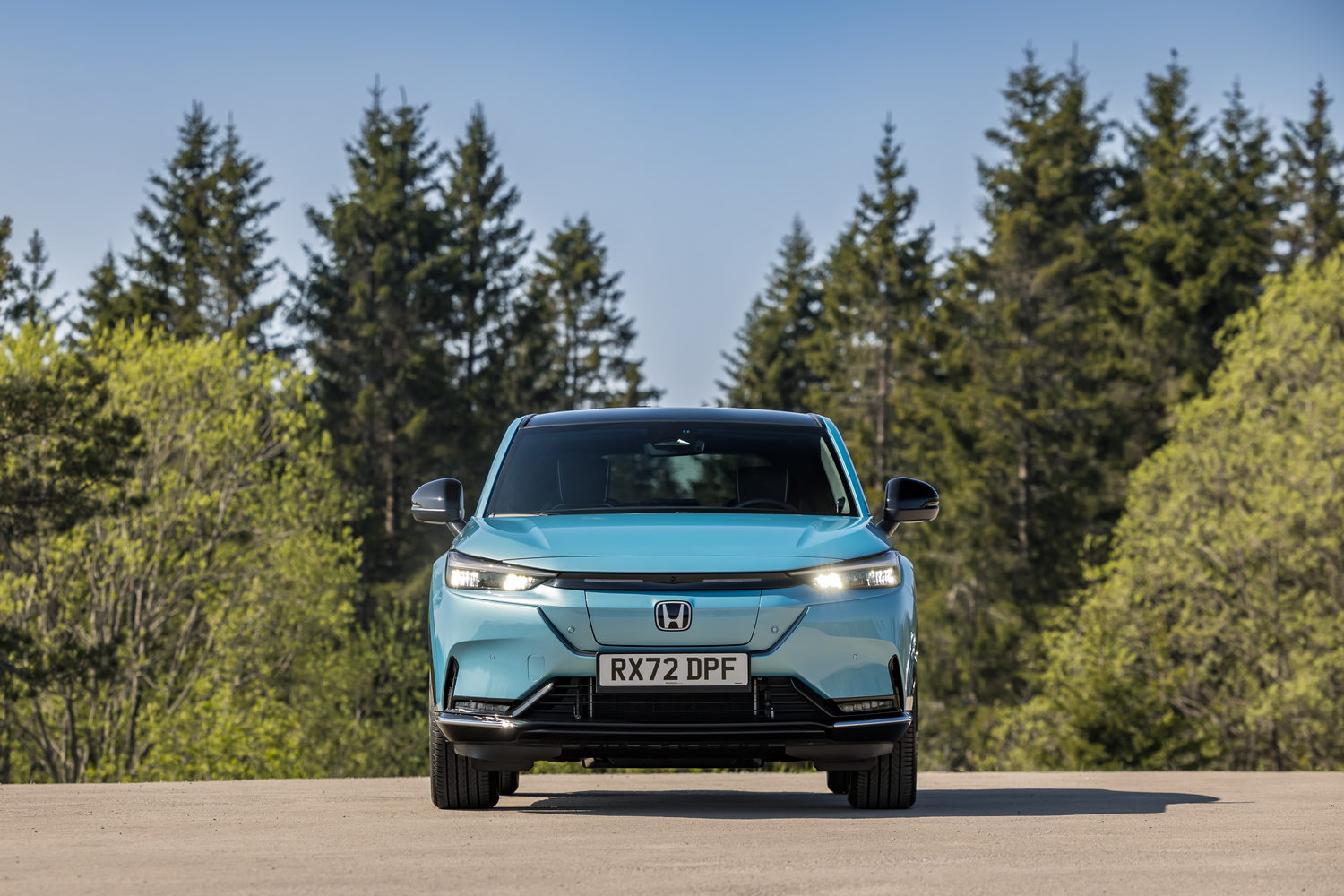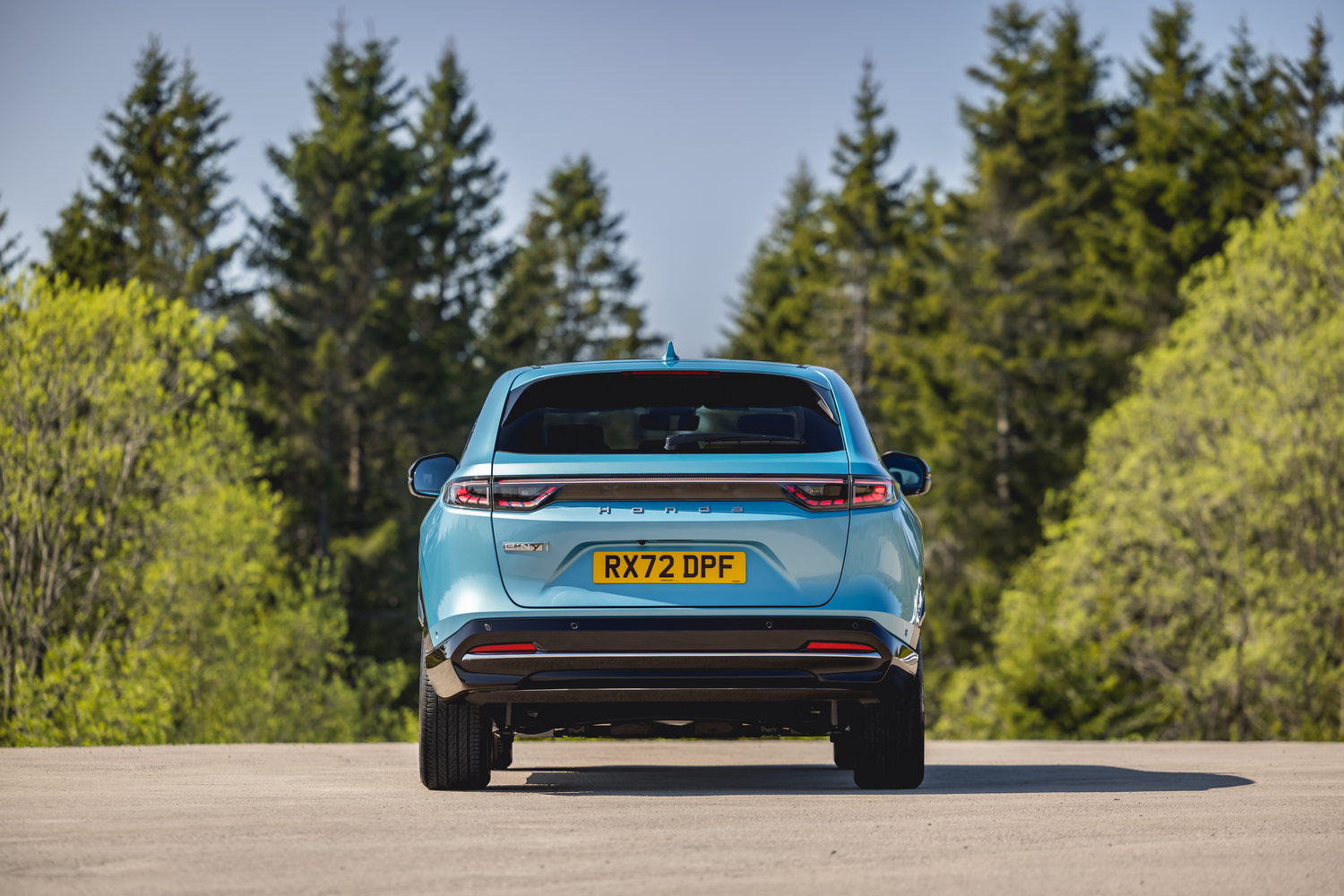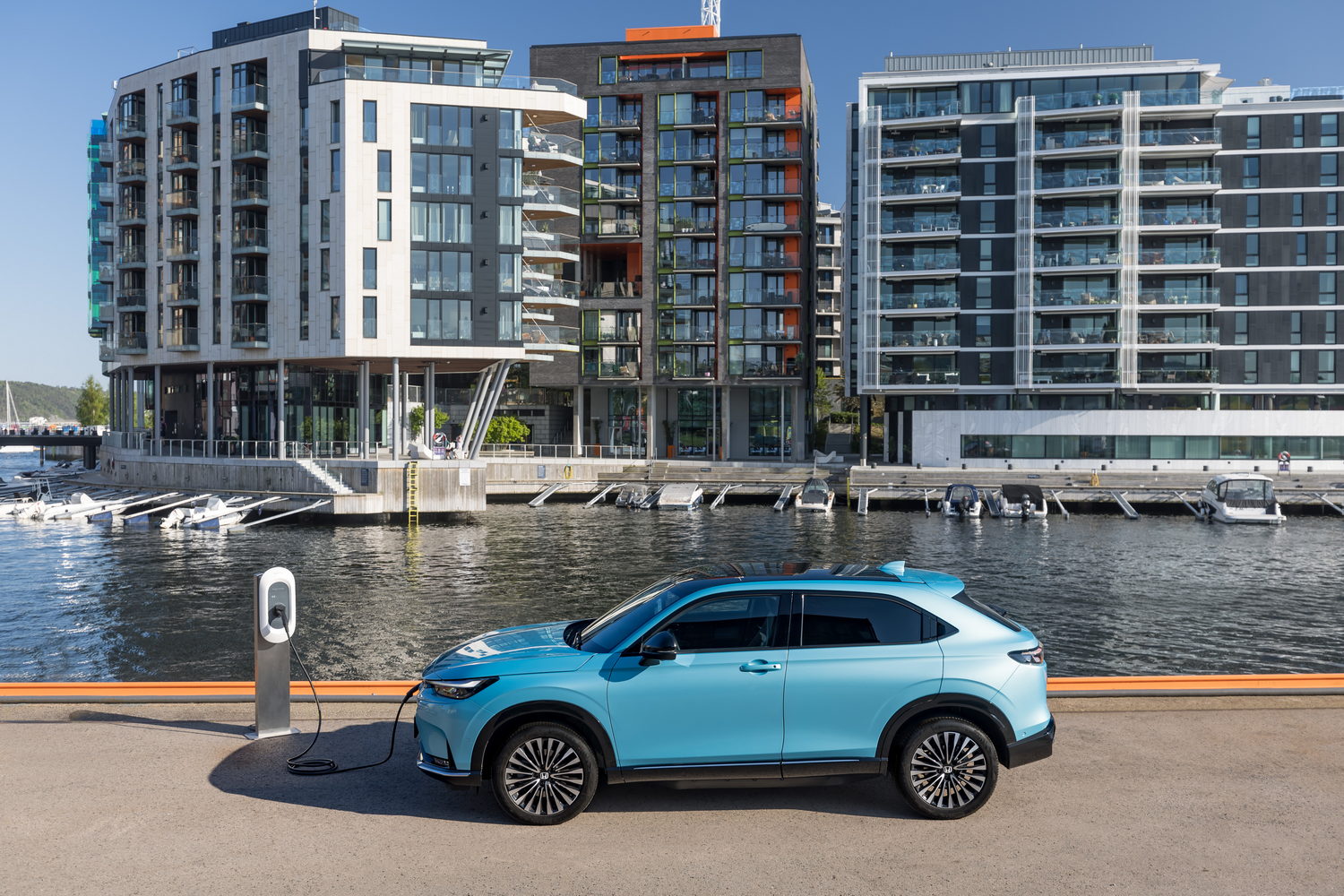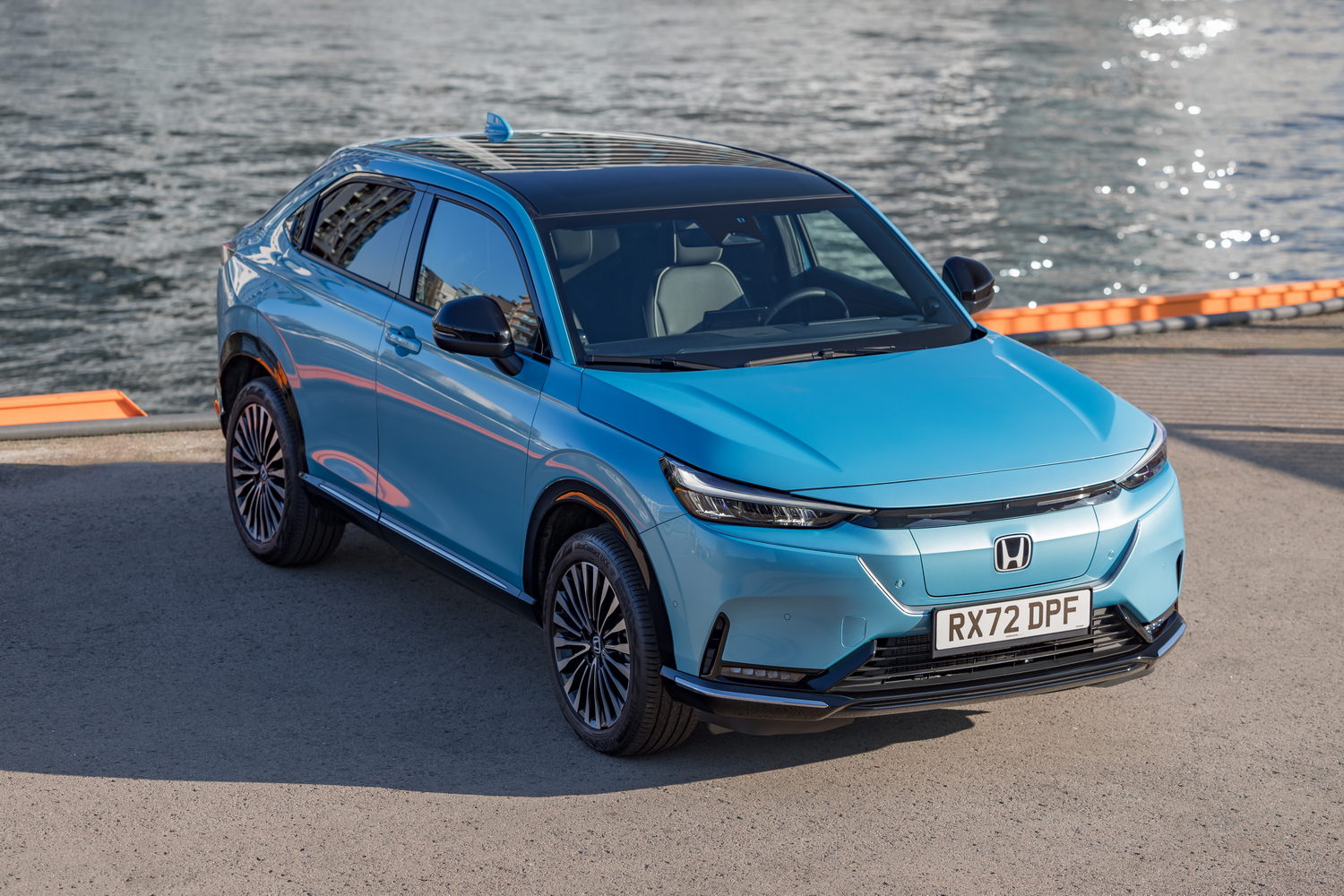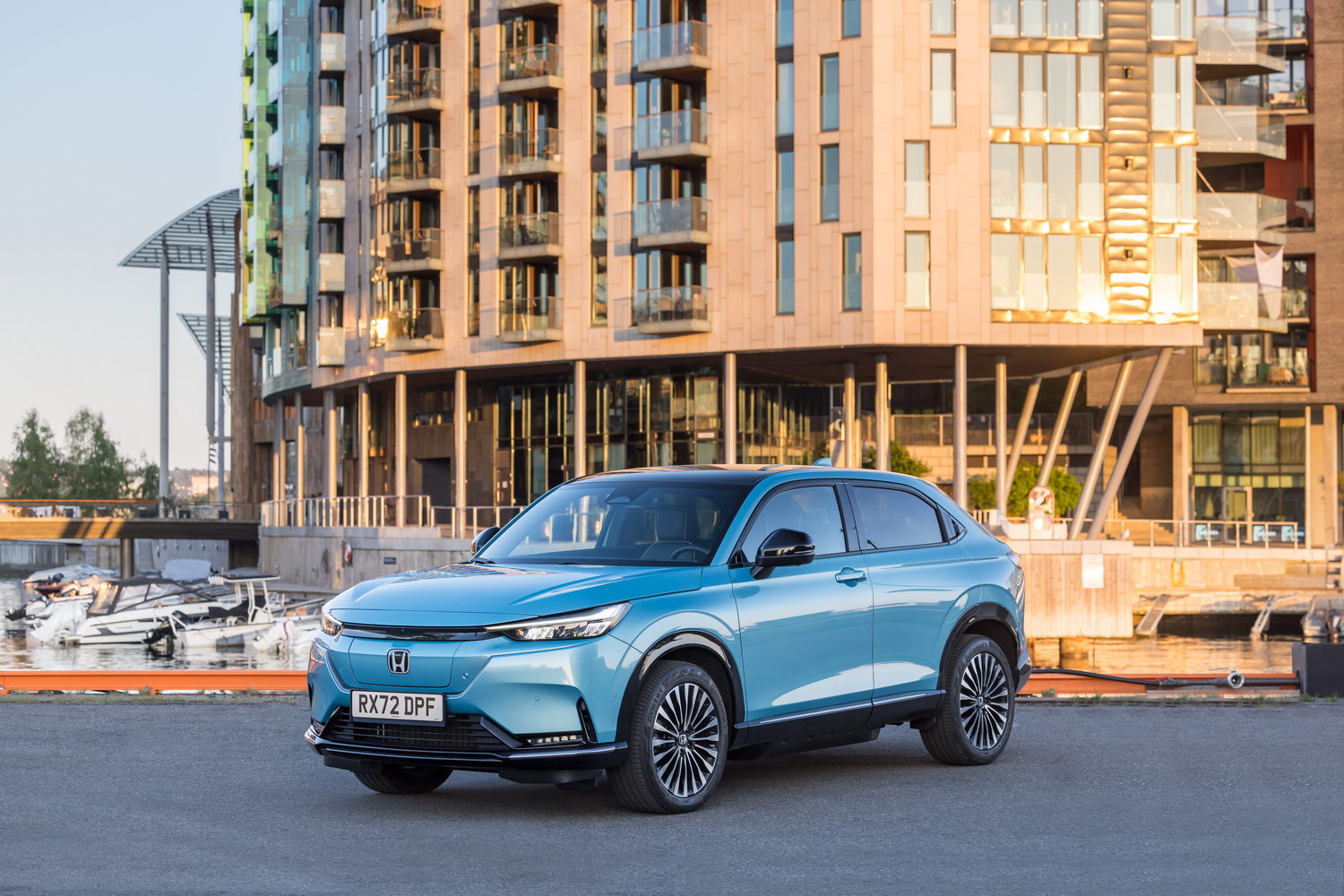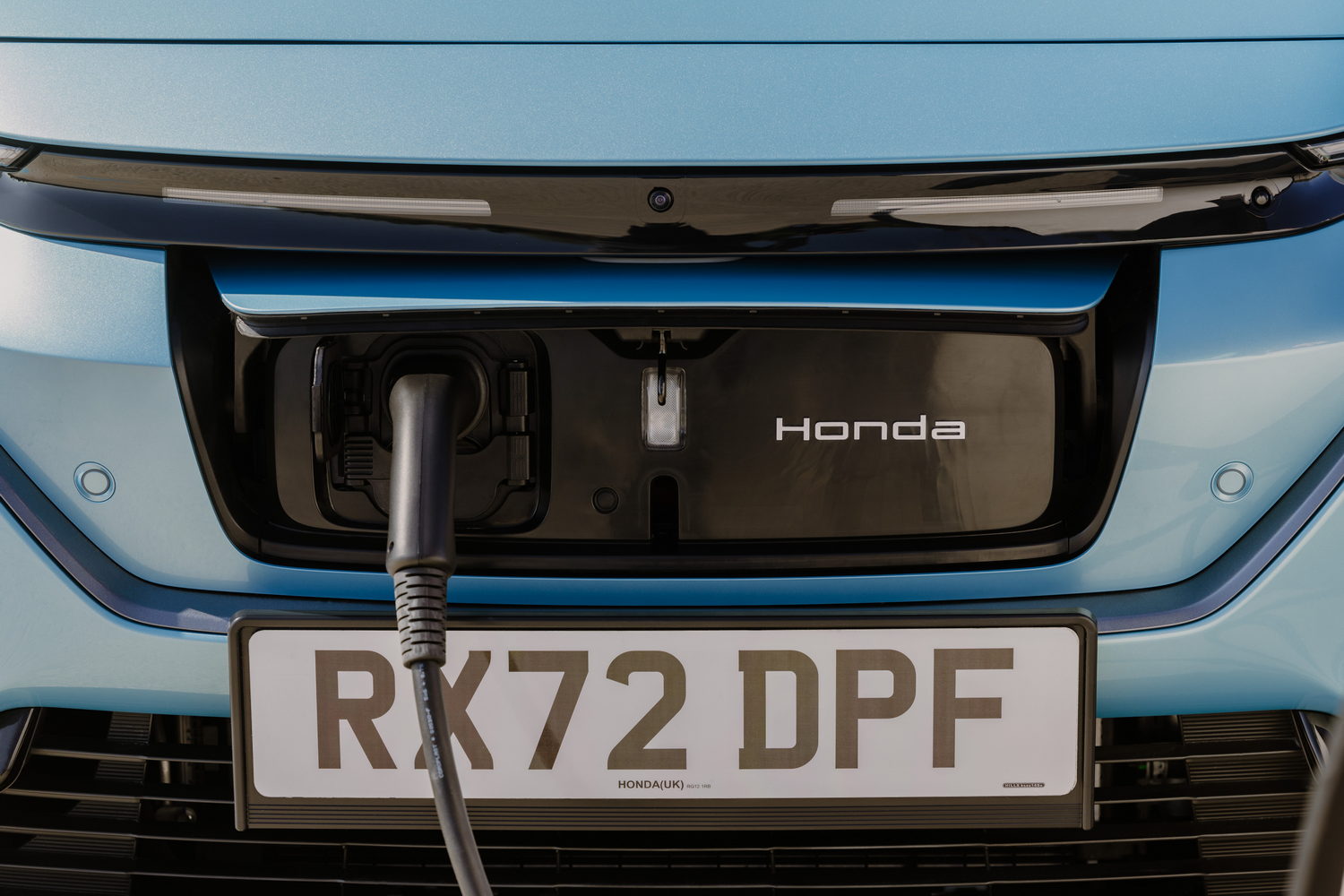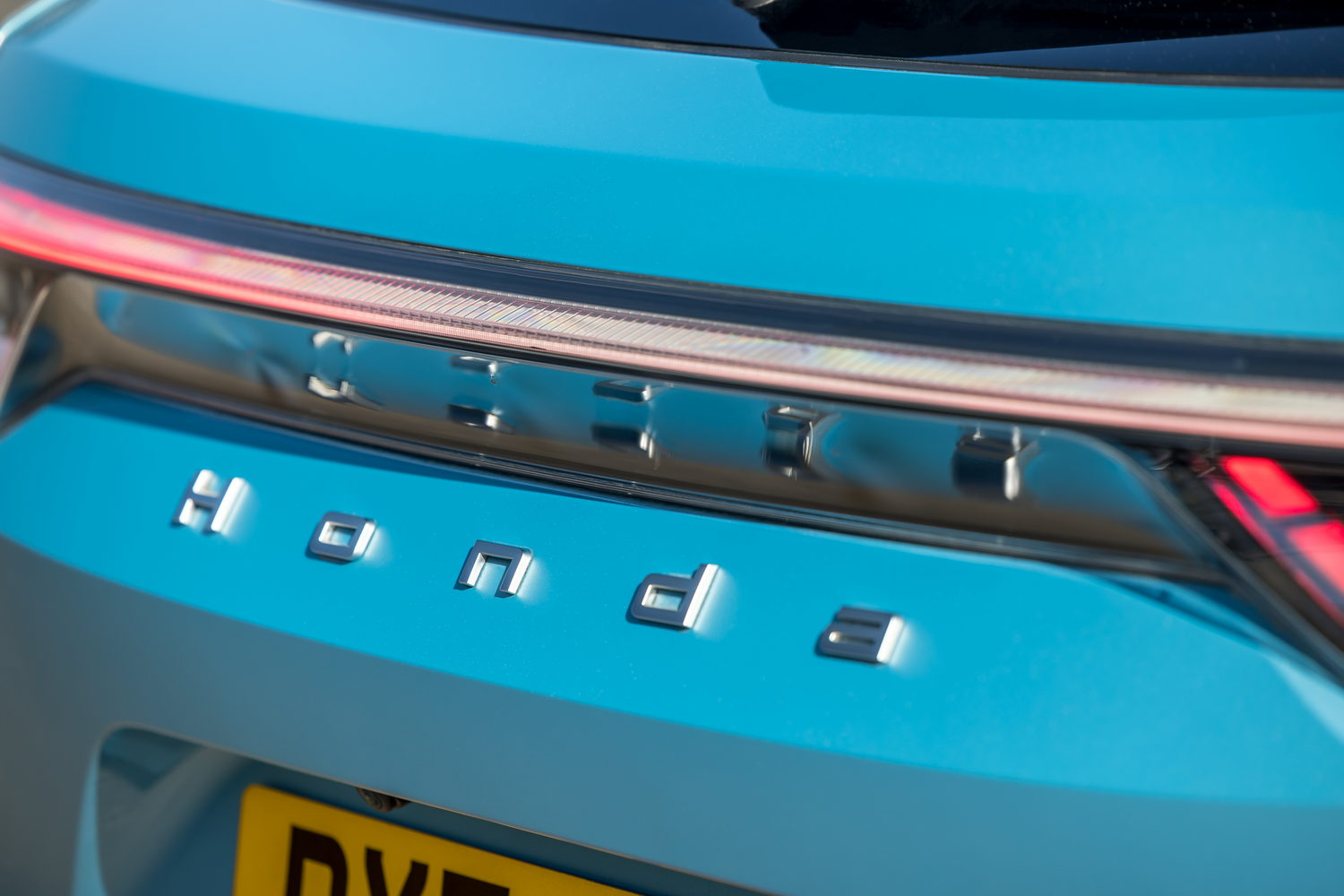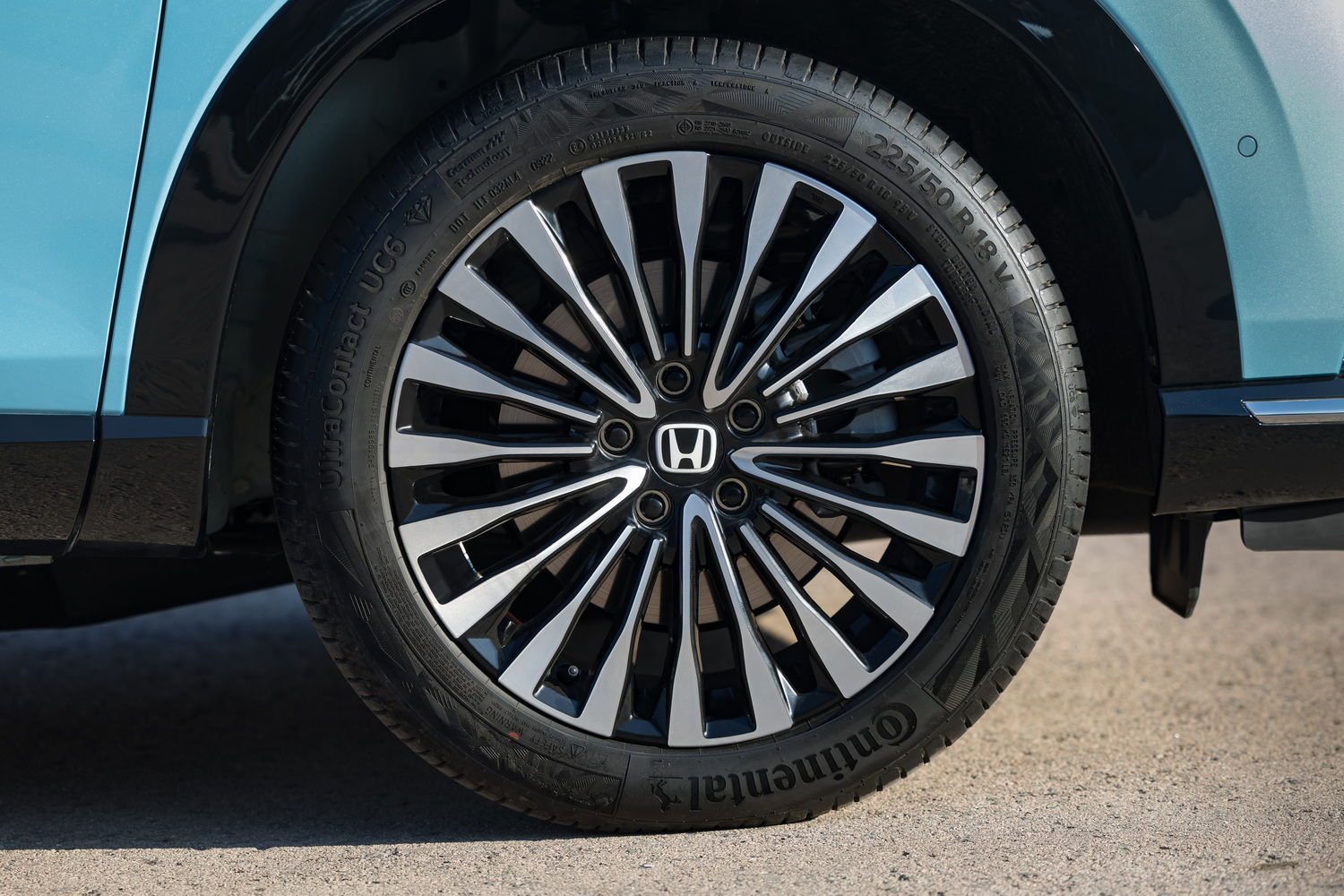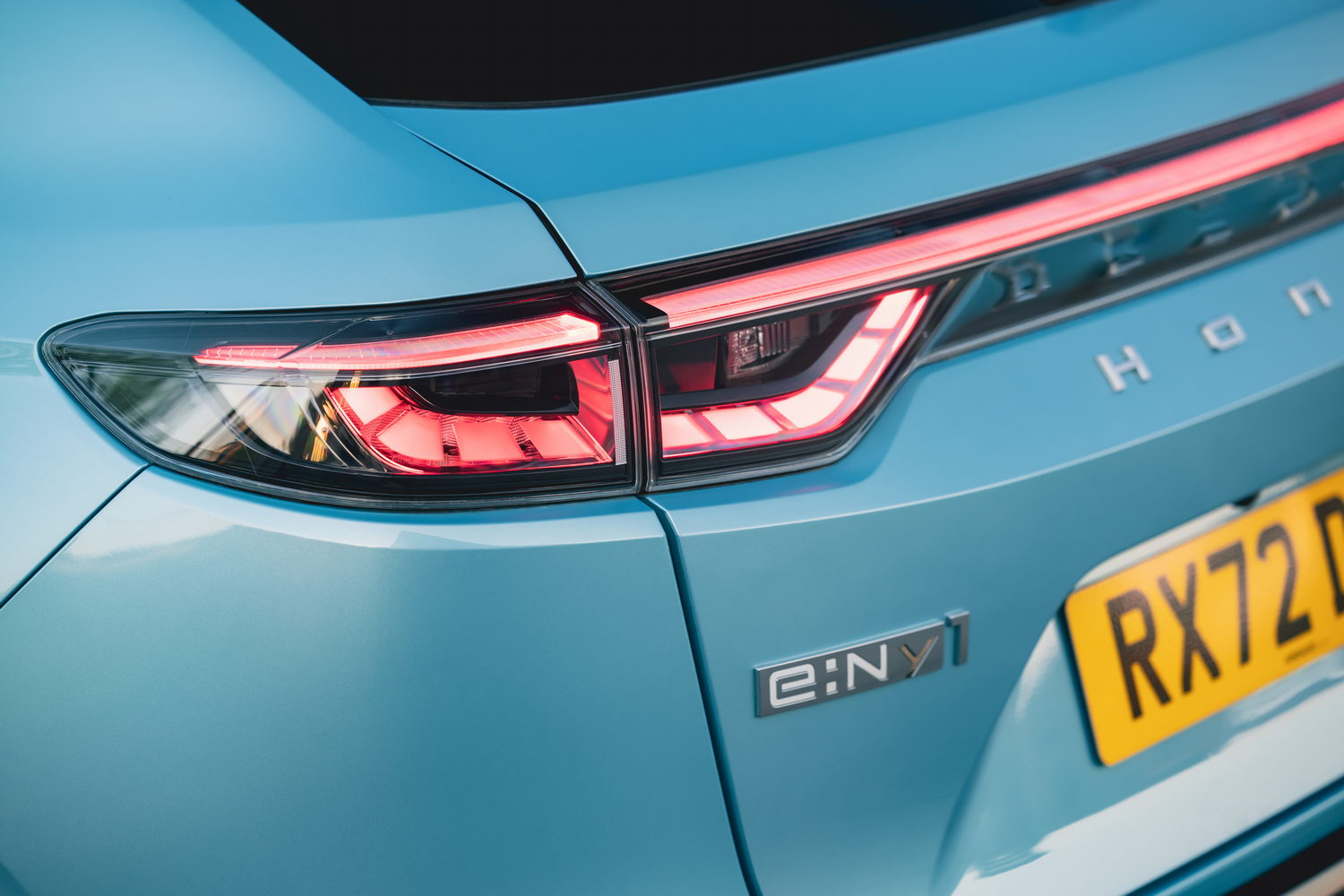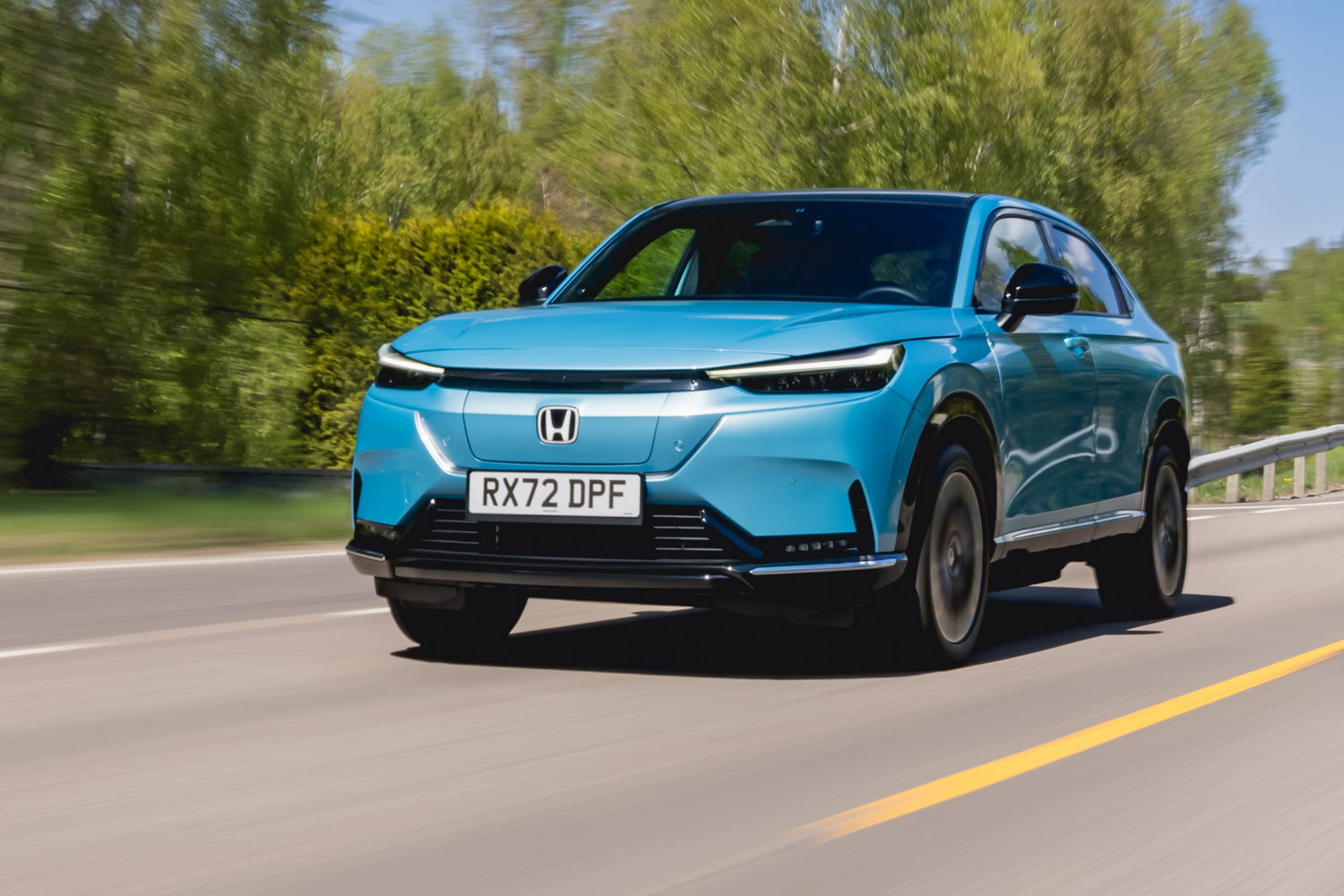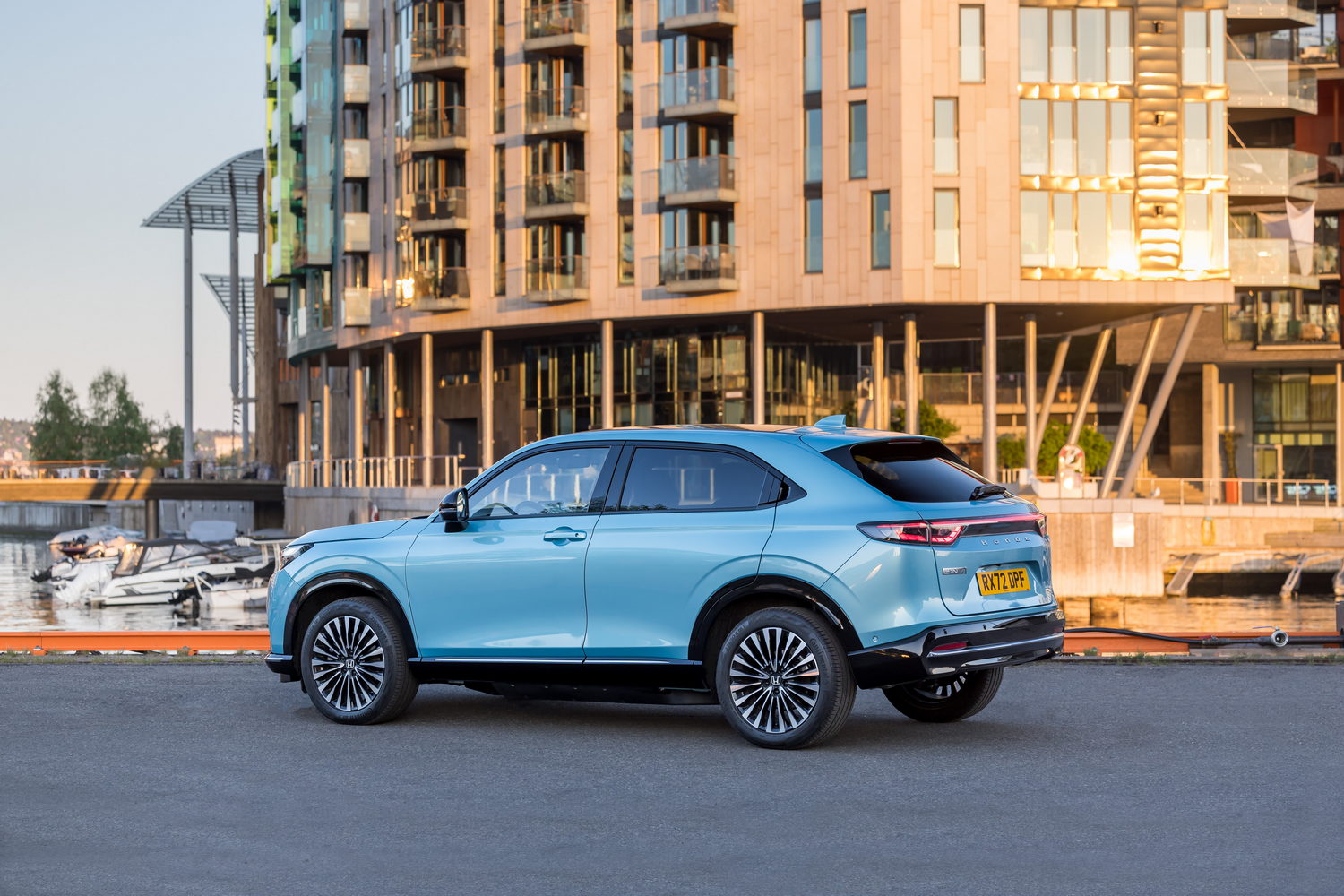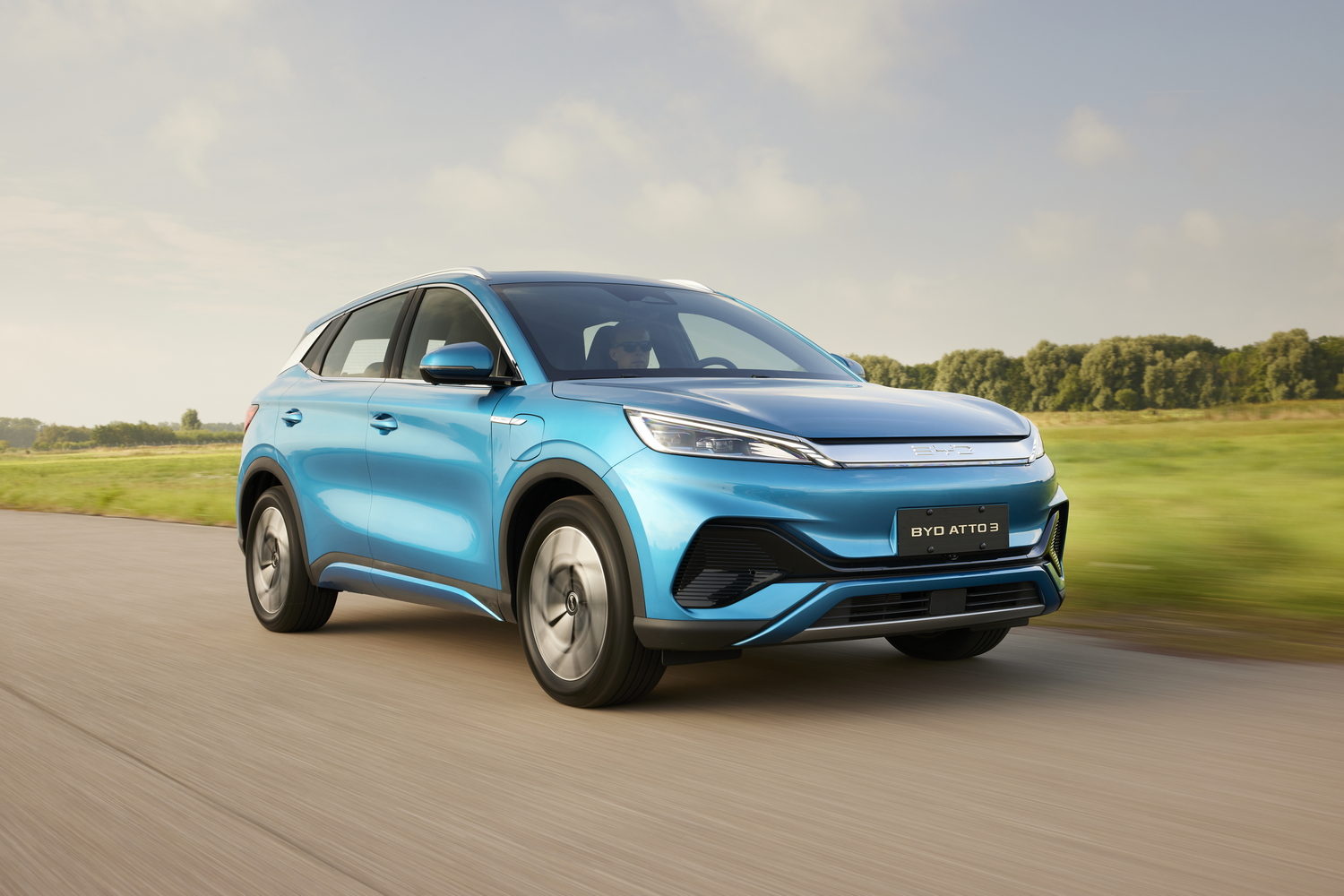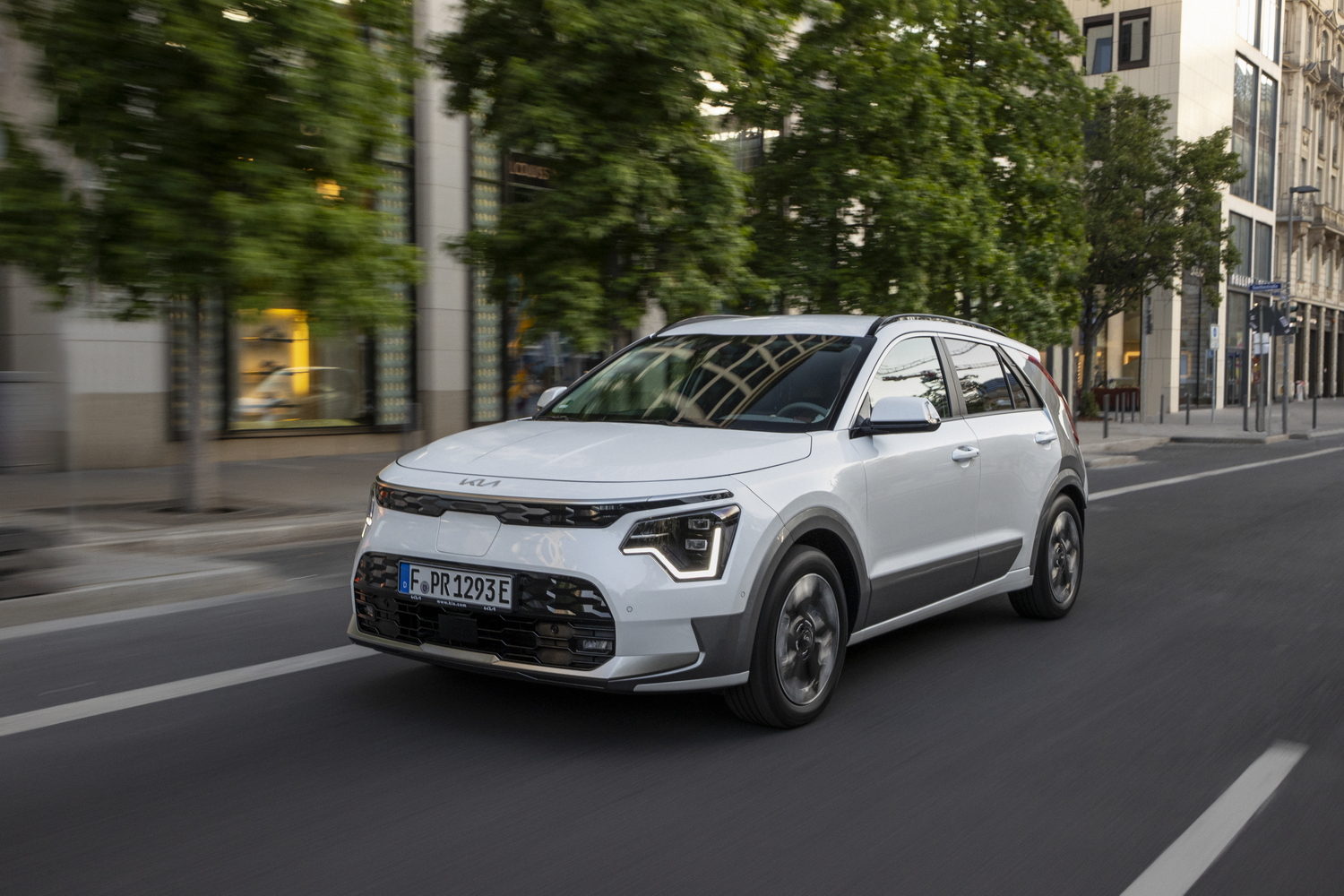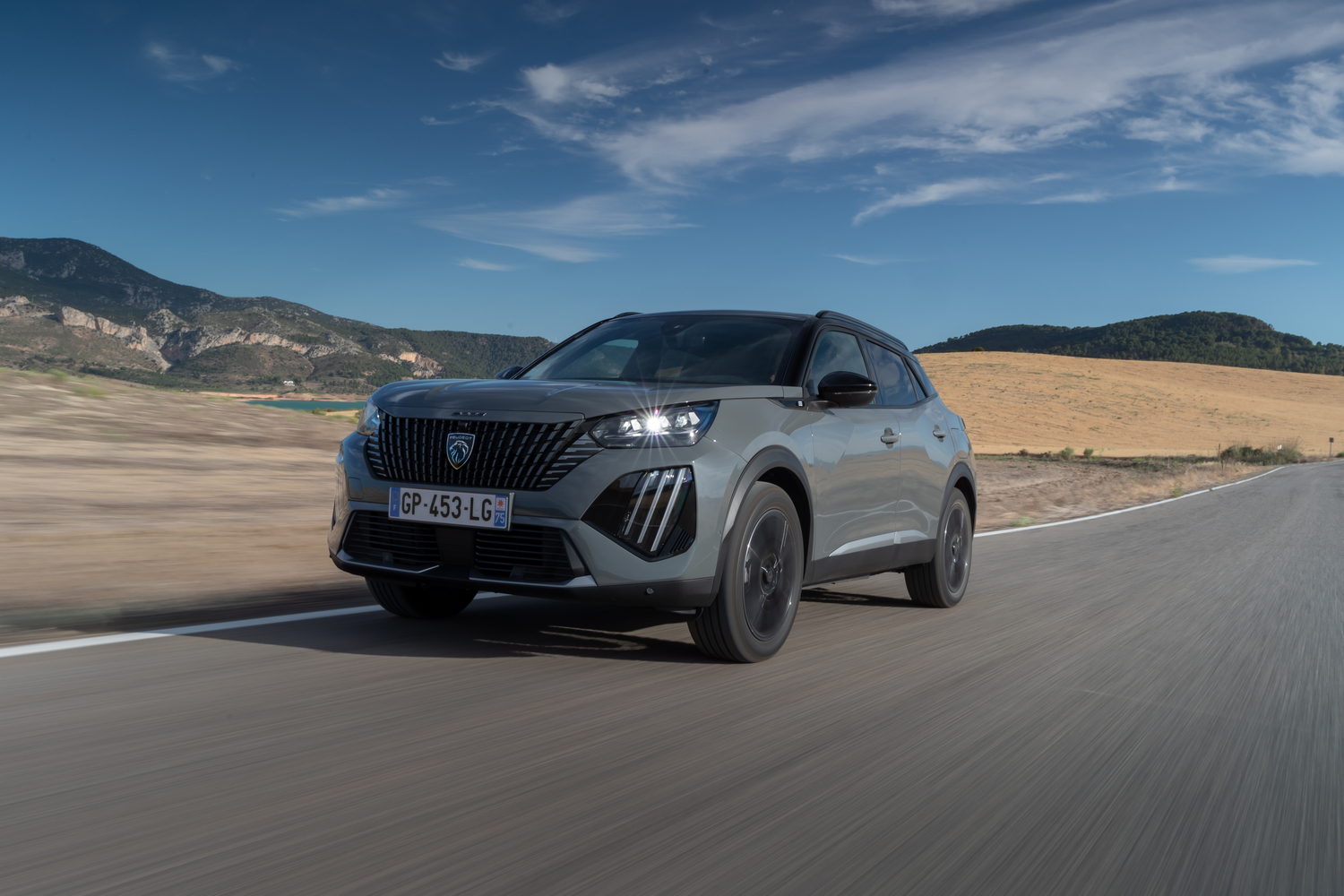Honda is a brand steeped in a rich history of design and innovation, including a back catalogue of models featuring household names and high-performance models that remain as desirable as they did in the period. Yet Honda hasn't been anywhere near the forefront of innovation when it comes to electric vehicles. Its cute, anthropomorphic Honda e city car was poorly received due to its high cost, short range and generally diminishing interest in that market segment. Having expanded its hybrid offering, Honda now has an electric crossover called the e:Ny1 to add to its portfolio.
In the metal
If you think the Honda e:Ny1 has an air of familiarity about its appearance, that is because it shares some similarities with the HR-V e:HEV hybrid. However, under the skin, Honda uses a newly-developed platform called the e:N Architecture F platform, with the 'F' referring to it being a front-engined, front-wheel-drive layout. An increase in high tensile steel adds to the e:Ny 1's rigidity, primarily around the car's core that houses the battery.
The visual similarities between the e:Ny1 and the HR-V are apparent, but the two cars are not identical. Wheelbase is 3mm shorter than the HR-V, yet the e:Ny1 is 57mm longer overall due to larger overhangs at the front and rear and is 2mm taller. Visual differences mainly focus around the front, where a bespoke 'grille' area houses the charging port.
A push button within the black trim below the bonnet line releases the charge port door, which slides upwards, although this action partly obscures the actual charge port, requiring some people to bend down slightly for better access. Two indicator lights across the top of the charge port area illuminate when charging is taking place and display different light sequences according to other modes so that owners can easily see the status of the car at a glance. Closing it proved frustrating as the latch mechanism repeatedly required several attempts to lock it in place during our time with the car. We could perhaps attribute this to an early production glitch, but it is below the standard expected from Honda.
Doors carry across from the HR-V, retaining the impression of the e:Ny1 being a three-door, as the rear door handle integrates into the window frame. A slight difference to the car's rear presents a full-width light bar joining the two light clusters. The Honda wordmark sits below the light bar, in a move that the company say will be used to differentiate electric models from now on. Hybrid and combustion models will continue to use the 'H' logo on the back. Most of the rear bumper is a gloss black finish that wraps around the lower sections of the e:Ny1, including the wheel arches, door sills and front bumper. While it helps to give the Honda an upmarket look, we wonder just how well that surface finish will age over time.
Honda makes the cabin unique through different switchgear and a 15.1-inch portrait touchscreen divided into three main sections. The upper third runs the infotainment and Android Auto or Apple CarPlay, while the middle section features various in-car functions, including a trip computer and power usage. The screen's base always displays the ventilation and heating controls. We prefer physical controls for climate settings, but having them always in the same position on a screen is an acceptable compromise.
A 10.25-inch display sits before the driver relaying all the essential driving information. Honda opts for button controls for the transmission rather than a shift lever, freeing up some space on the centre console and making it easier to access the wireless charging pad. USB charge ports and a 12-volt power socket are easily accessible too. The rest of the cabin layout is sensible, with adequate storage dotted throughout. However, despite feeling solidly built, the look and feel of the interior plastics in prominent areas left a lot to be desired, falling well below the standards of many competitors in the segment.
Rear passenger space in the outer seats is sufficient, though not class-leading when it comes to headroom. Designers have attempted to save some head space by not providing a roller blind with the panoramic glass roof, instead offering the option of a two-part blind that can be inserted manually. The roof uses 'low energy' glass that reflects 95 per cent of infrared light and 99 per cent of UV rays to help minimise heat build-up inside. We're used to the middle seat in this segment being something of a compromise, but the firmness of the seat base, narrowness and reduction in headroom that it provides renders it all but useless for even the smallest of adults.
Driving it
For many people, the range figure remains one of the main criteria when searching for an electric car. Honda gives the e:Ny1 a 68.8kWh battery with a range of 412 kilometres, which ought to be sufficient for a broad spectrum of drivers. It slots in amongst its main competitors and matches their performance in most regards with a 150kW (204hp) motor that produces 310Nm of torque. Performance is reasonably brisk even though Honda has tailored the throttle response to be smoother to provide a more enjoyable driving experience. That smoothness applies to the setup of the suspension and also the steering.
Honda isn't trying to produce an overtly sporty car with the e:Ny1. It realises that most people want to get from A to B in a comfortable and mostly relaxing way, which does come through in how the car drives. There isn't a great deal of road or wind noise to report, even at motorway speeds. Driving in the city during the early part of our drive highlighted a rather high level of energy consumption for relatively low average speeds in relatively mild conditions. That figure started to improve throughout the day, eventually dropping to hover around 16-17kWh/100km.
Three drive modes are available, with 'Econ' reducing the rate of acceleration to prolong the driving range slightly. Throttle response is noticeably dull compared to the 'Normal' drive mode and may help add a few more kilometres onto the overall driving range. In contrast, the 'Sport' setting sharpens the response from the accelerator pedal without any novelty cabin sounds to simulate an engine. While feeling faster in a straight line and when pulling away from traffic lights, the whole setup of the e:Ny1 doesn't make you want to drive it in such a sporty manner, so we suspect many will be leaving it in its default Normal mode.
Stopping performance is good, with a consistent feel from the brake pedal providing confidence. The suspension also does a comprehensive job of absorbing surface imperfections and maintaining a comfortable ride quality thanks to low friction dampers tuned to accommodate the weight increase from the electric powertrain. Combining this setup with increased structural rigidity results in very low levels of body roll in corners.
The overall driving range of 412 kilometres falls short of several direct rivals, which can have ranges of up to 480 kilometres. However, Honda considers its battery charging performance to be better, even if the peak figure is sometimes lower than the competition. Engineers have created a battery with a more consistent charge rate over the 10-60 per cent range, meaning that the e:Ny1 should rapidly charge more predictably than others, but we have yet to prove this independently.
What you get for your money
The Honda e:Ny1 costs from €54,995 in Ireland. That's for the Elegance specification including front and rear parking sensors, a rear-view camera, electrically adjusted driver's seat, wireless smartphone charger, heated front seats, keyless entry and start, and the 15.1-inch infotainment system.
Above that is the e:Ny1 Advance, priced at €56,495. That adds Honda parking pilot, a powered tailgate, panoramic glass roof and a heated steering wheel.
Summary
The e:Ny1 is a much-needed addition to Honda's range, and the technical specifications all seem good on paper. However, when you dig a little deeper, some of the car's shortcomings become more prominent, such as the quality of the interior plastics or any real driving finesse. It ticks the boxes as an electric crossover, but the e:Ny1 doesn't feel as good as what Honda is known for doing or capable of producing. And now that Irish pricing has been confirmed, we also think it is just too expensive.

